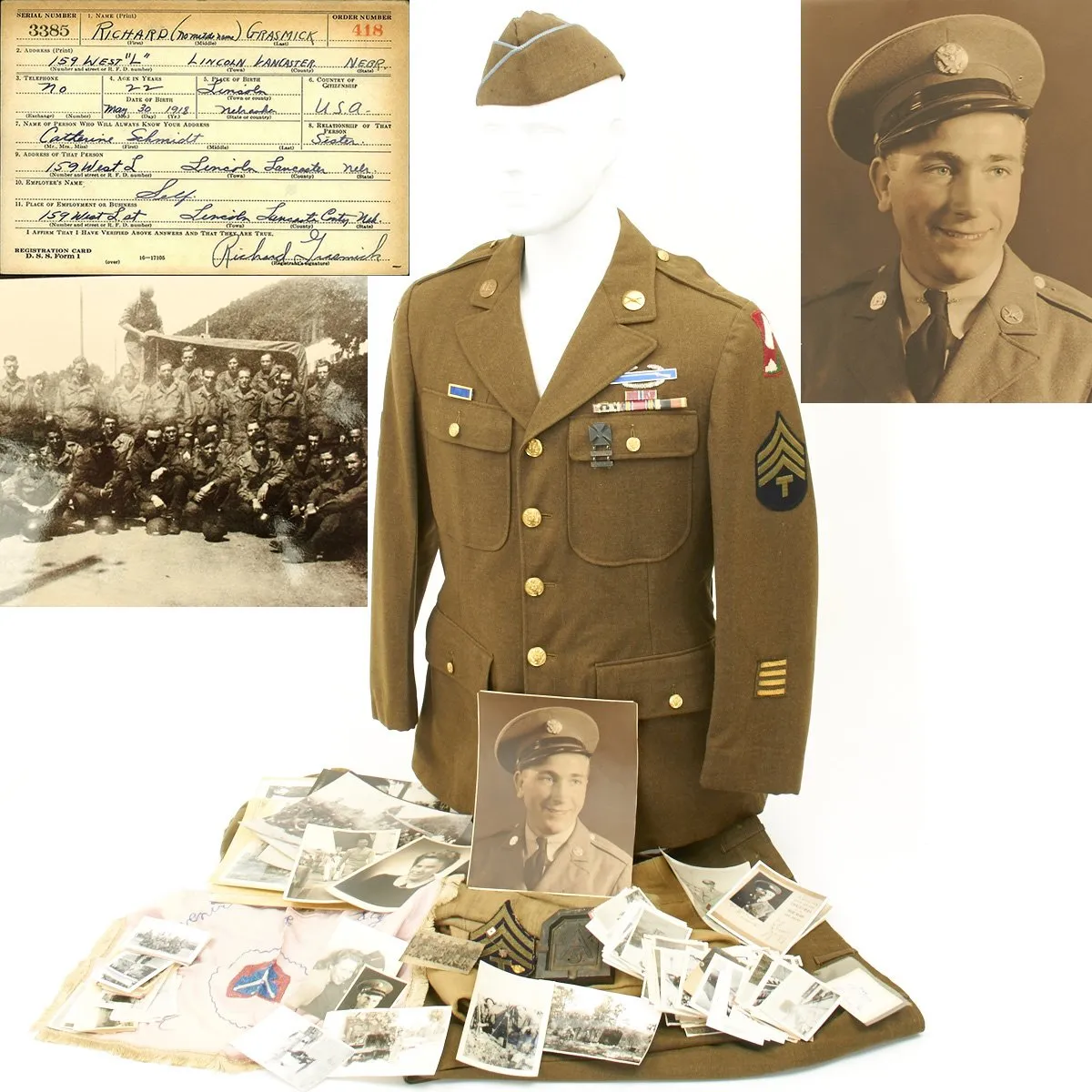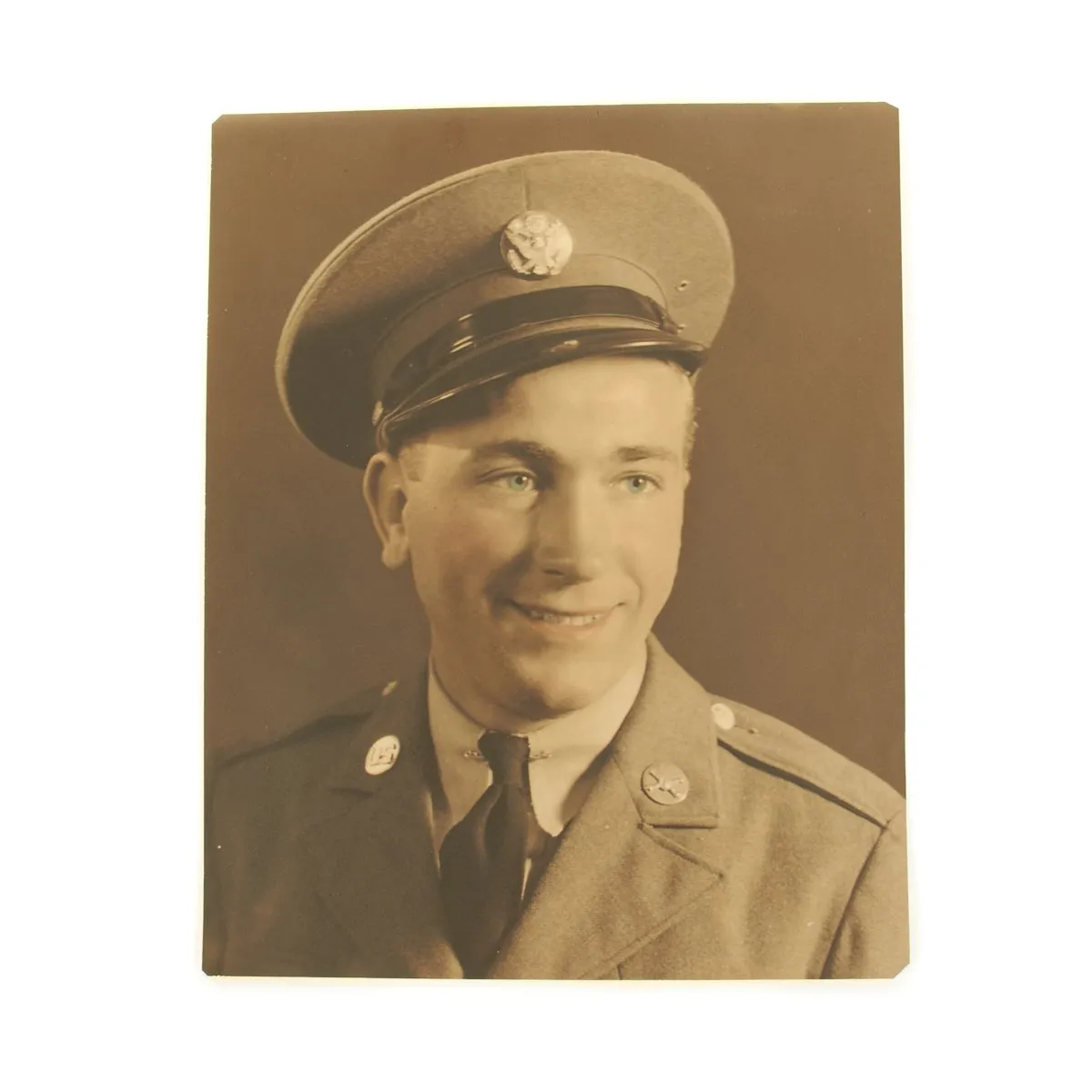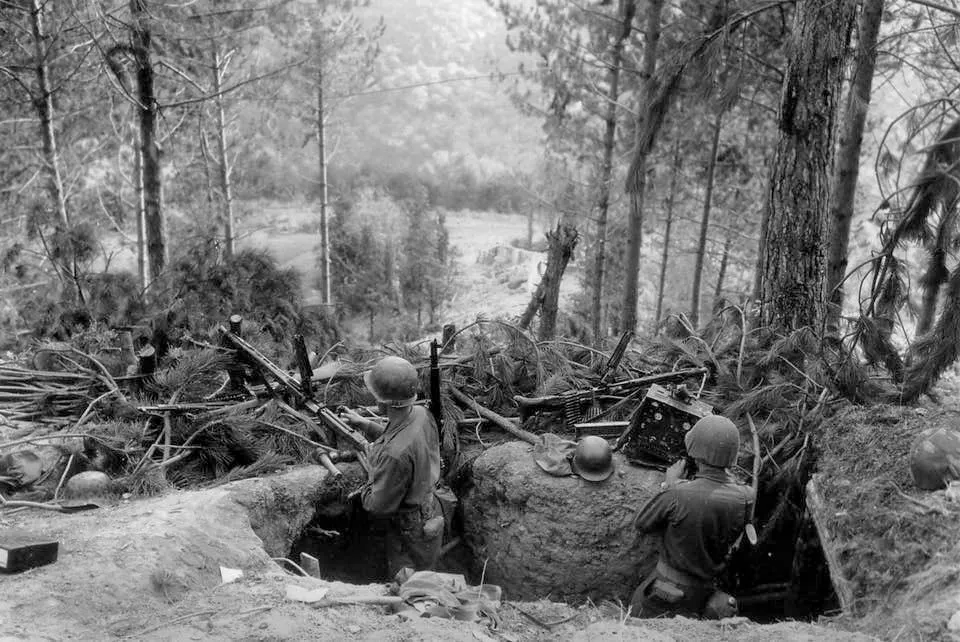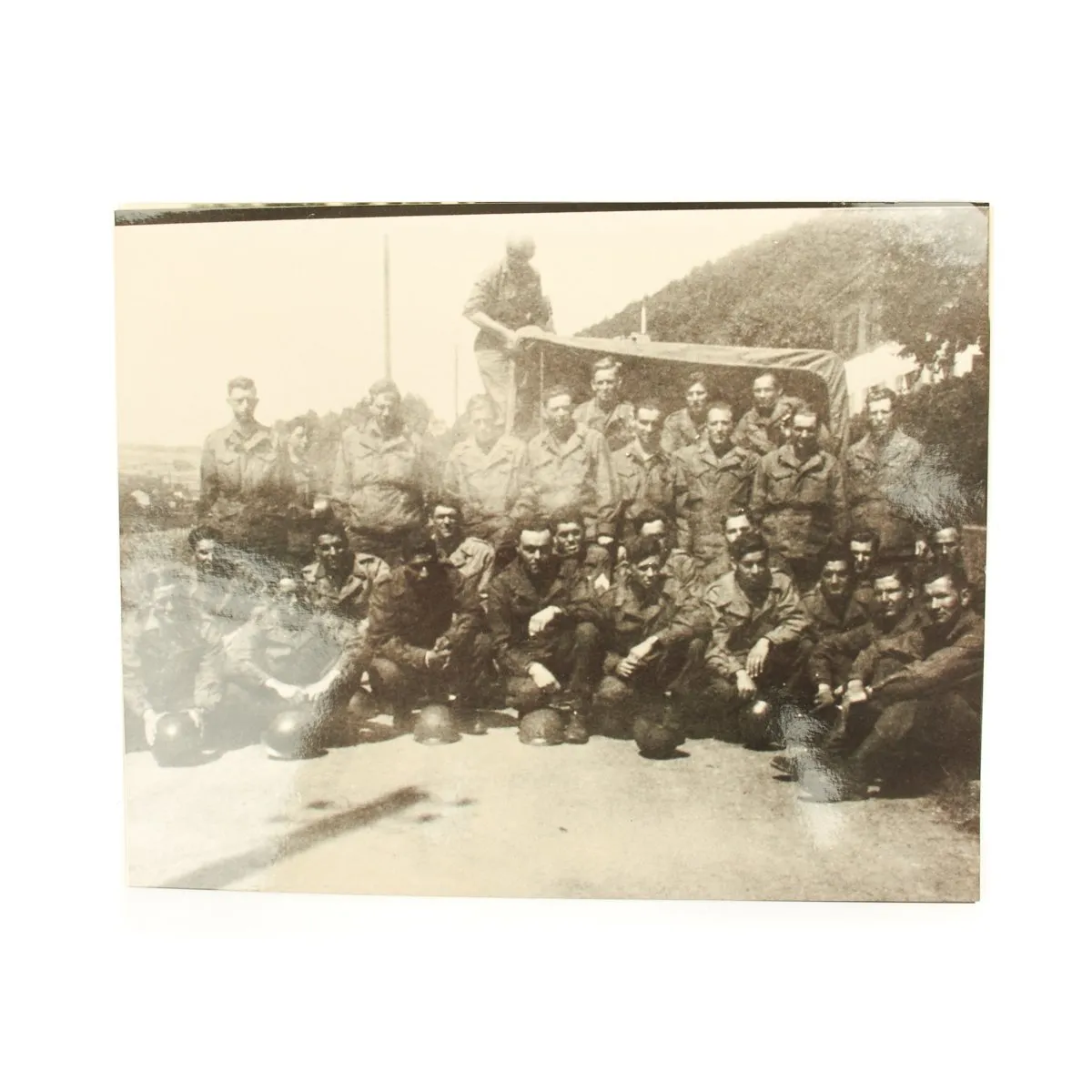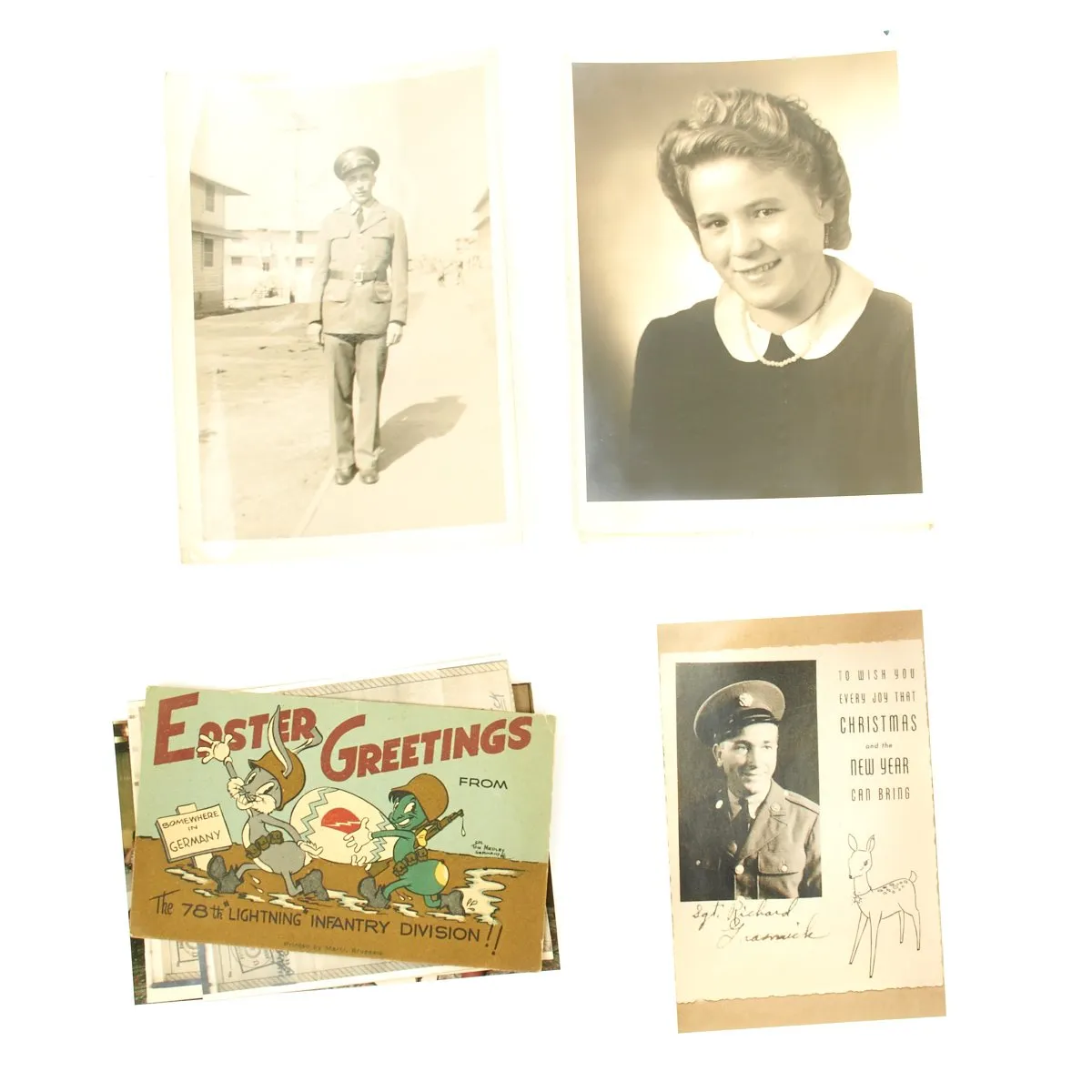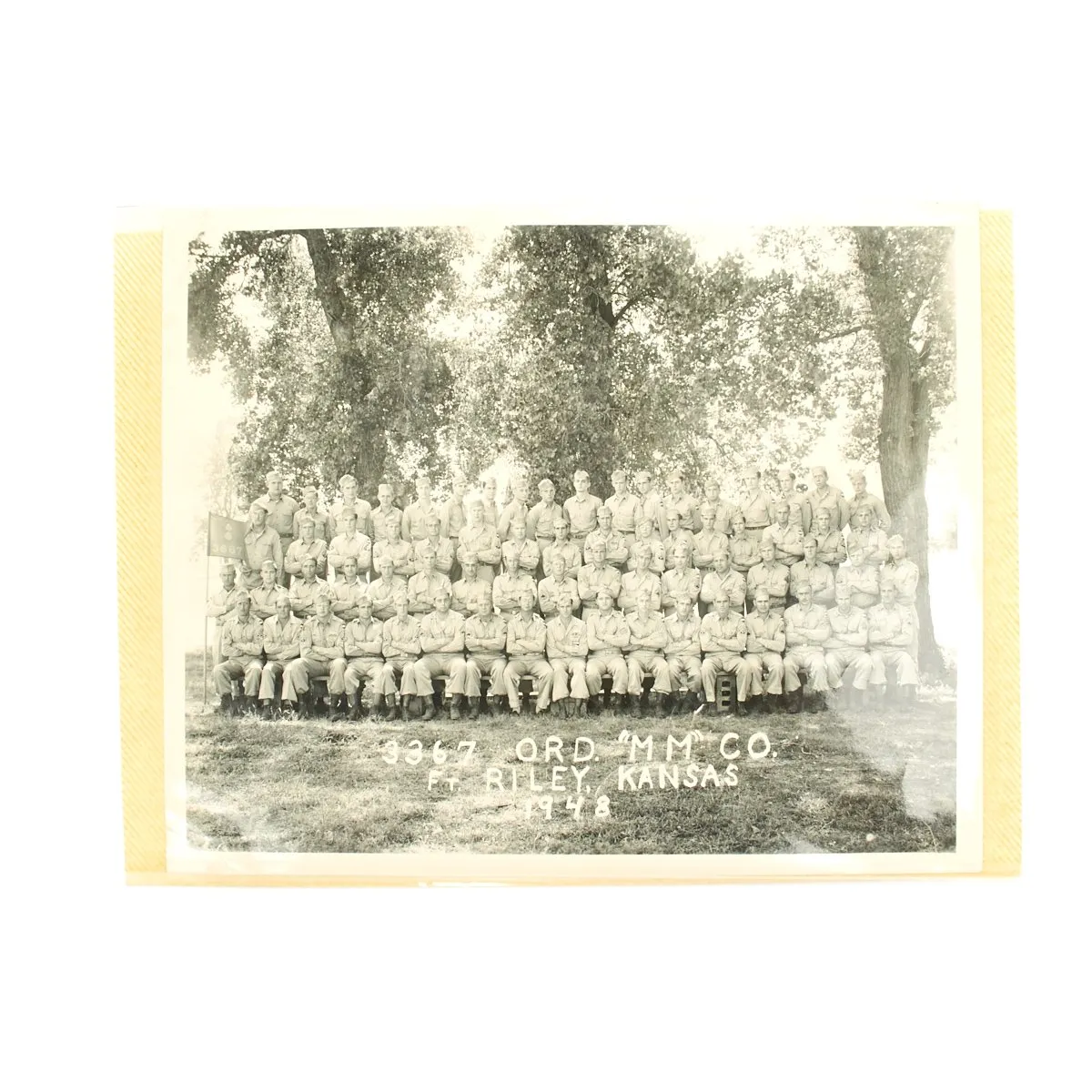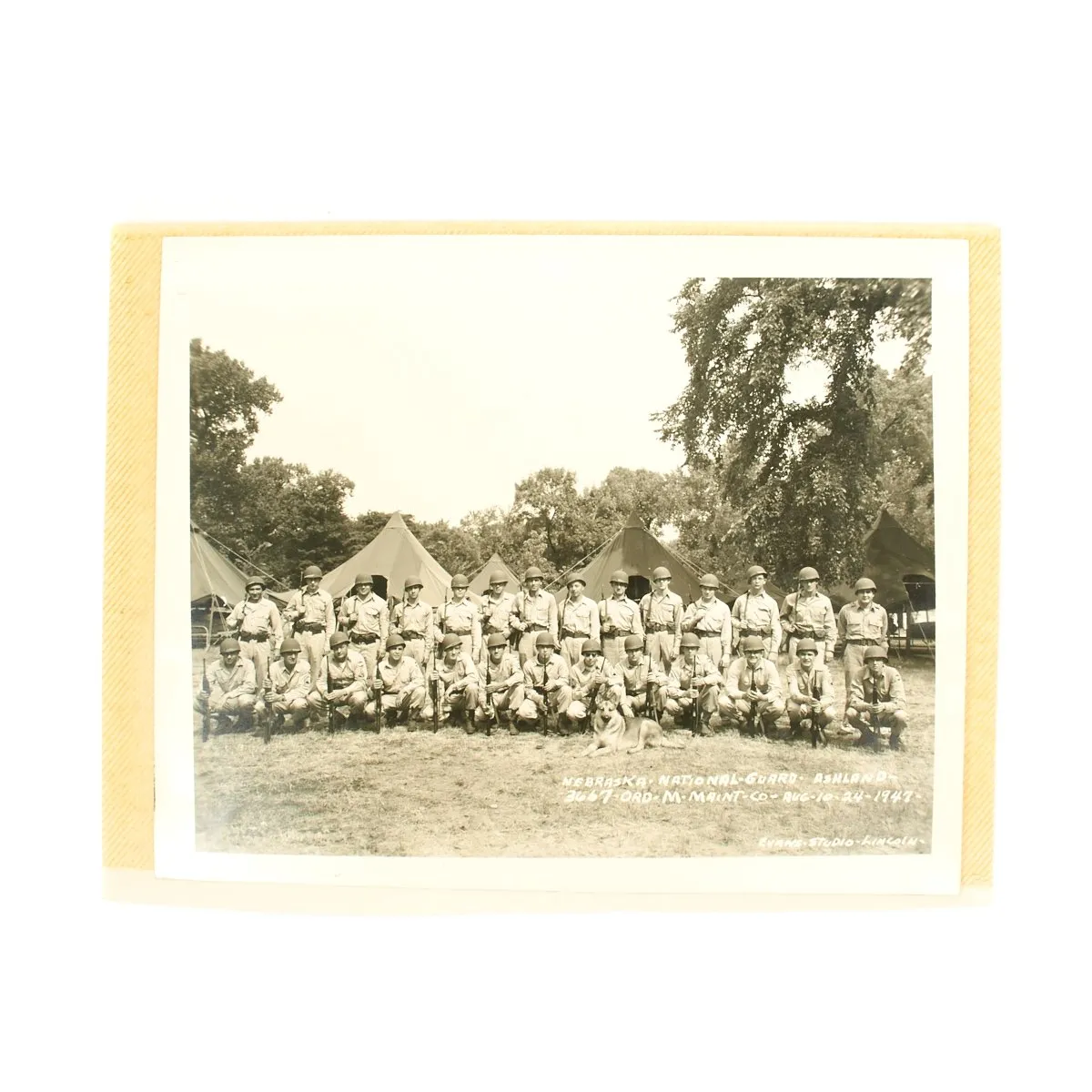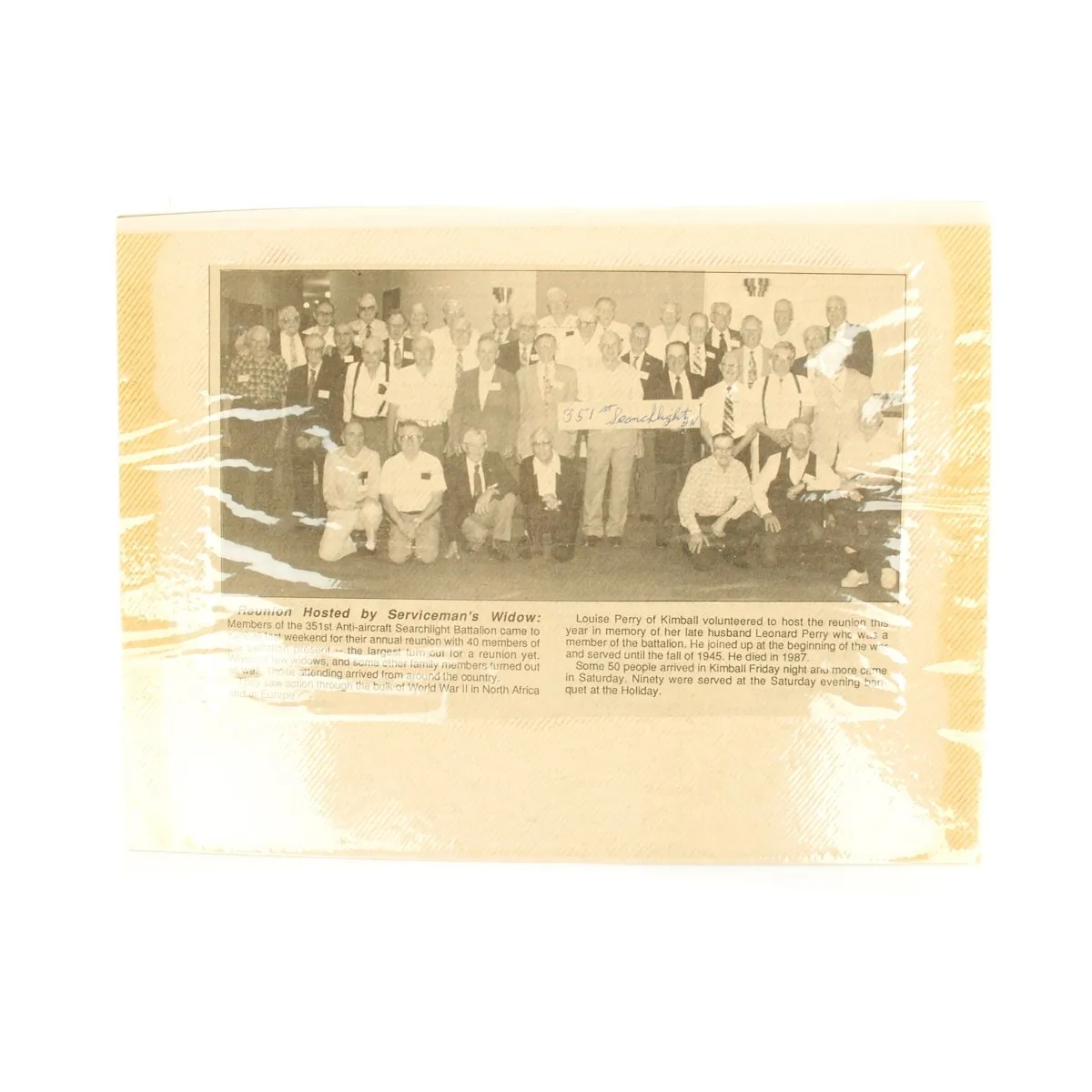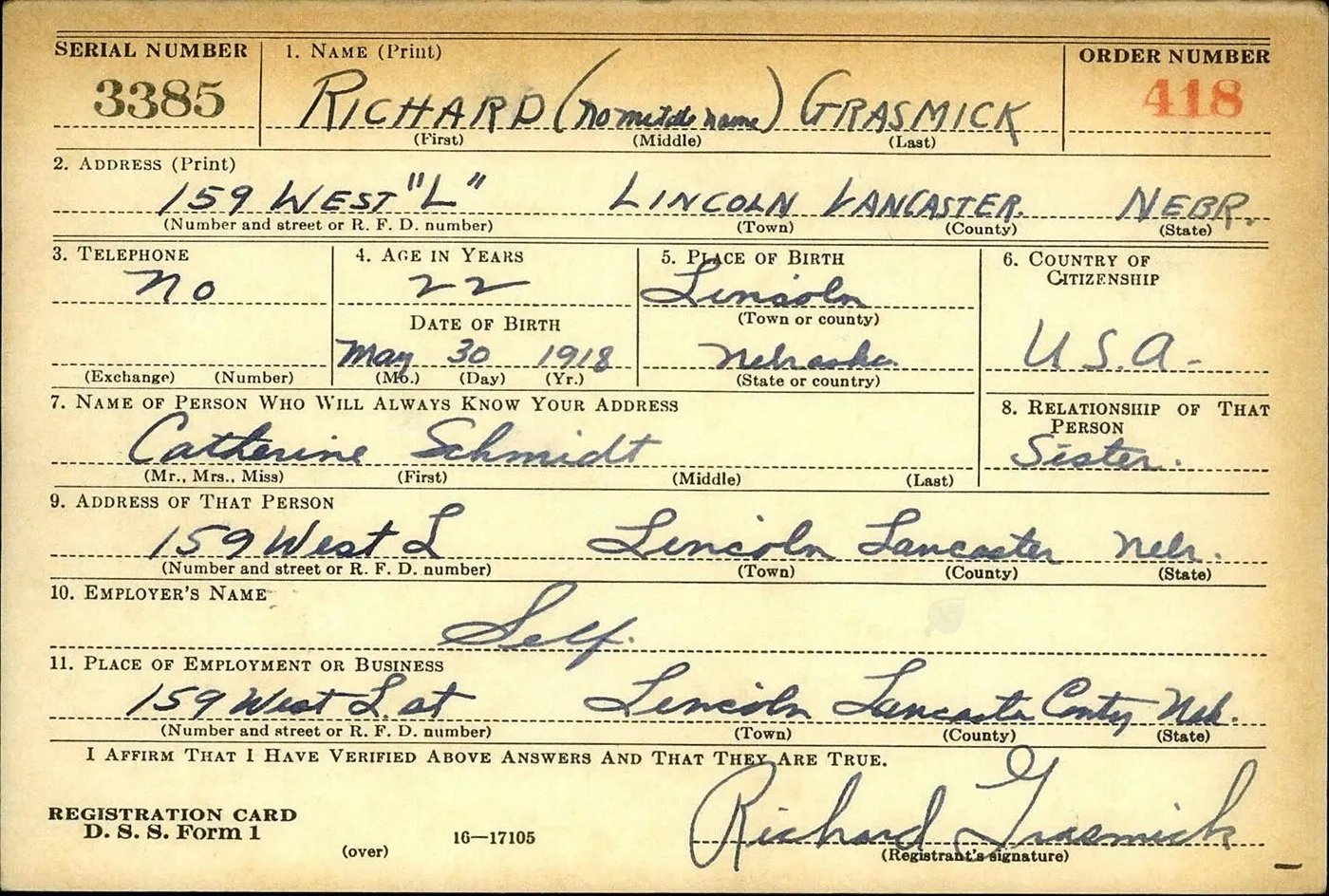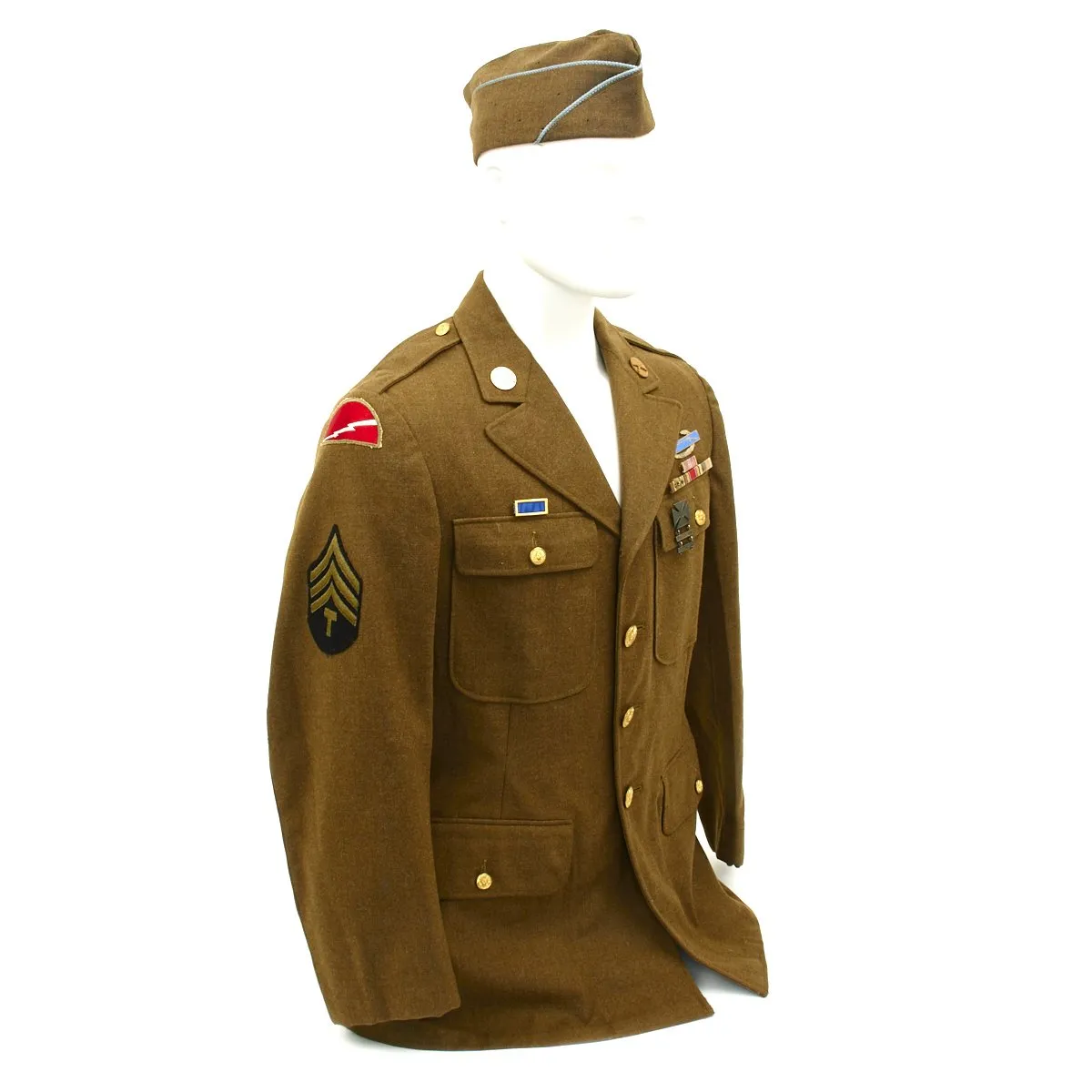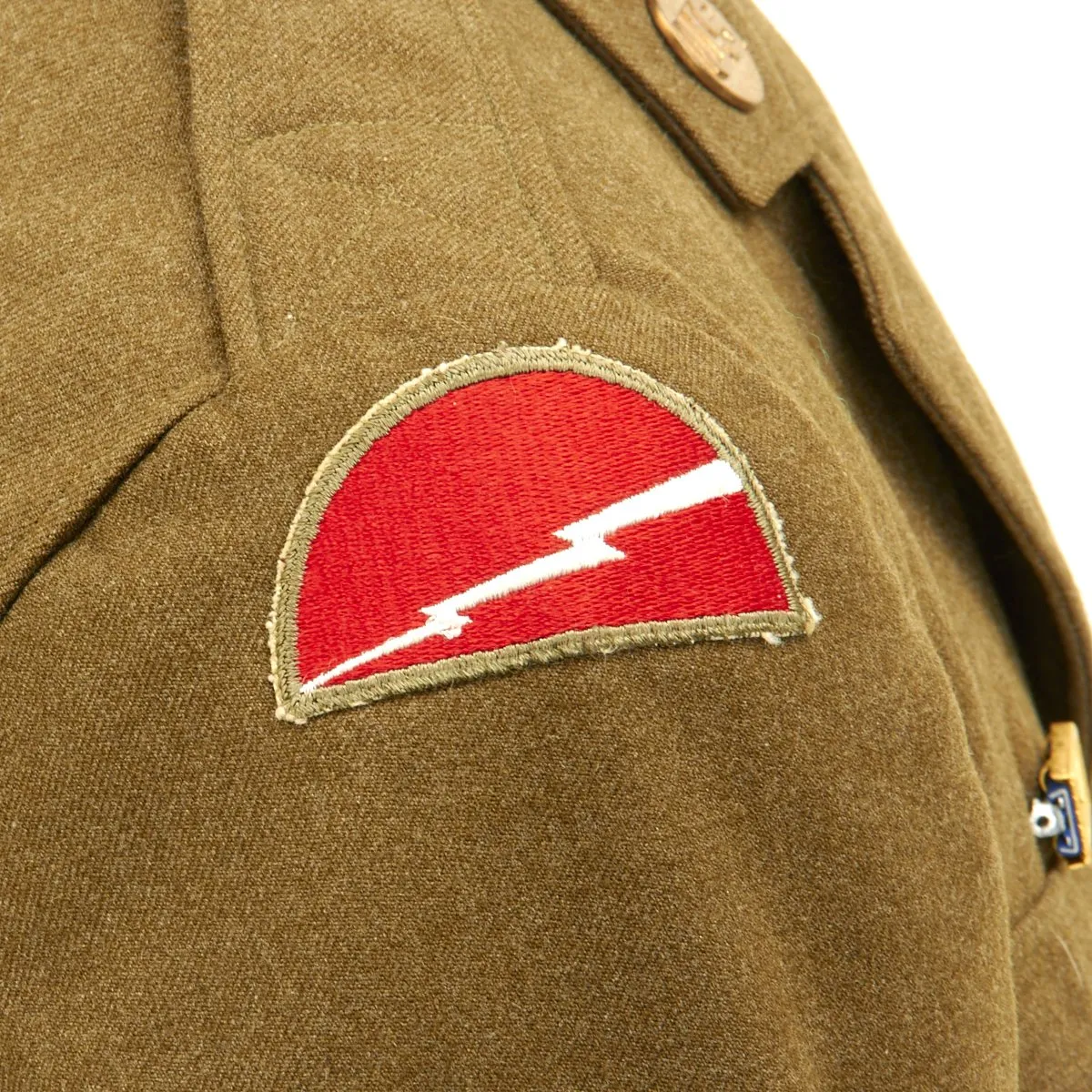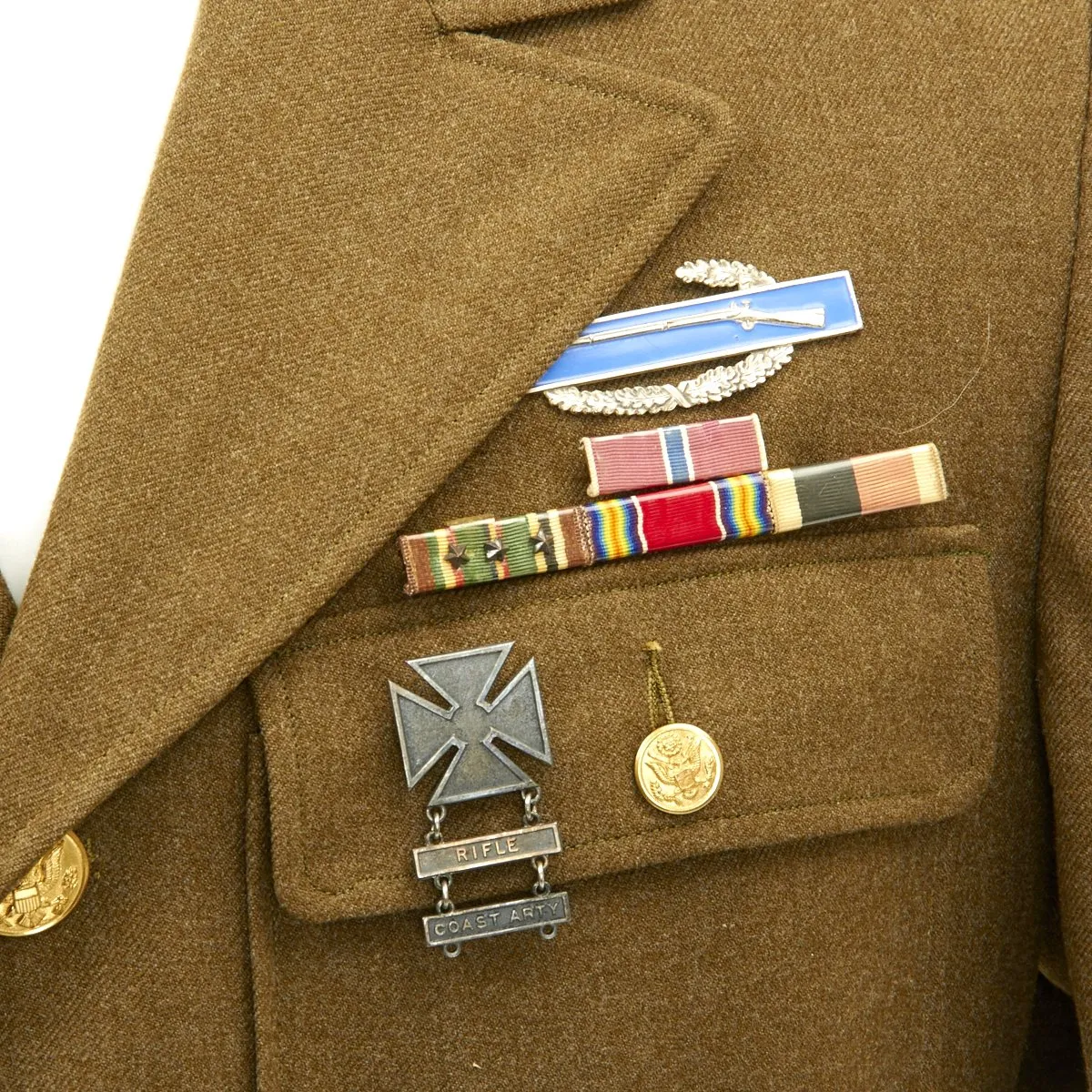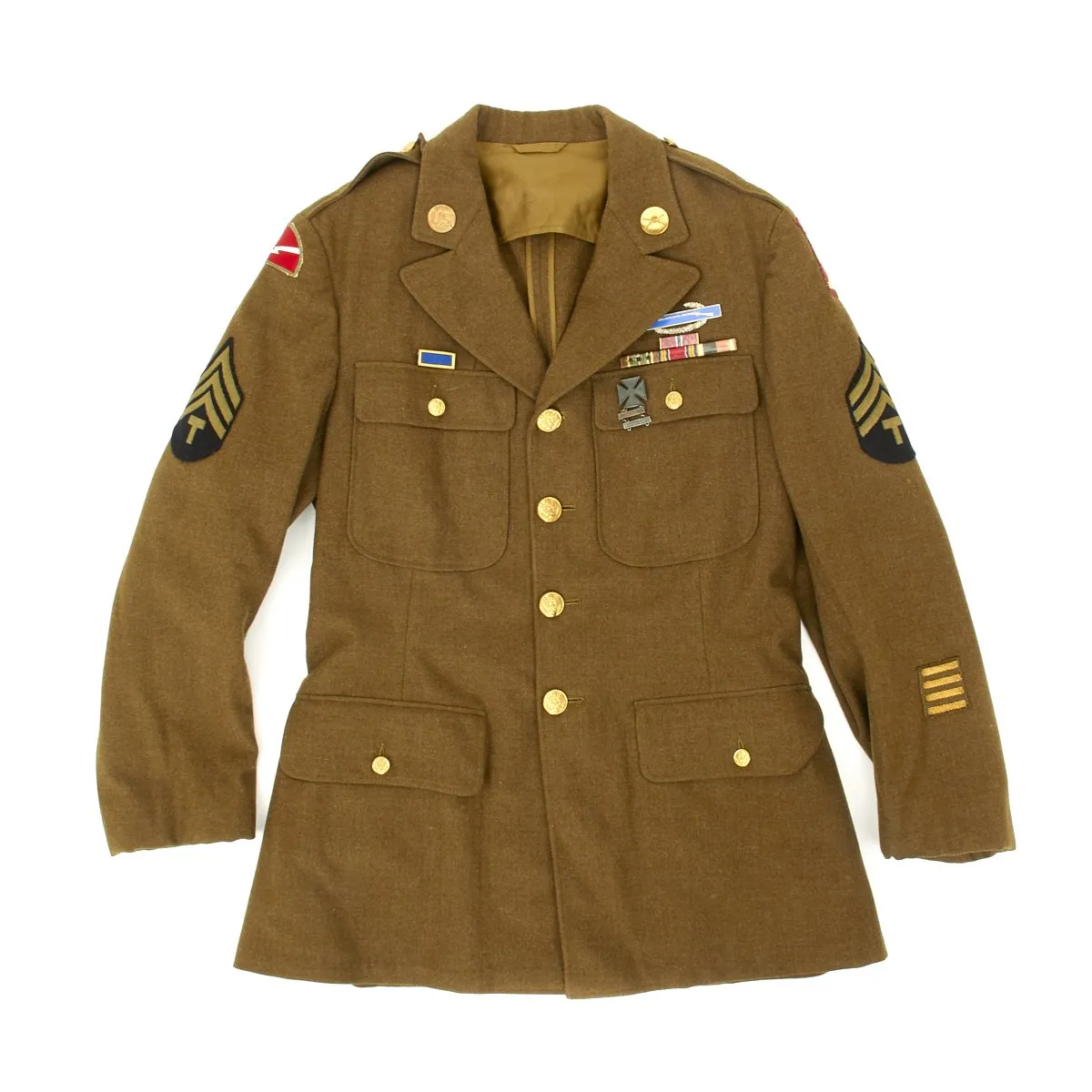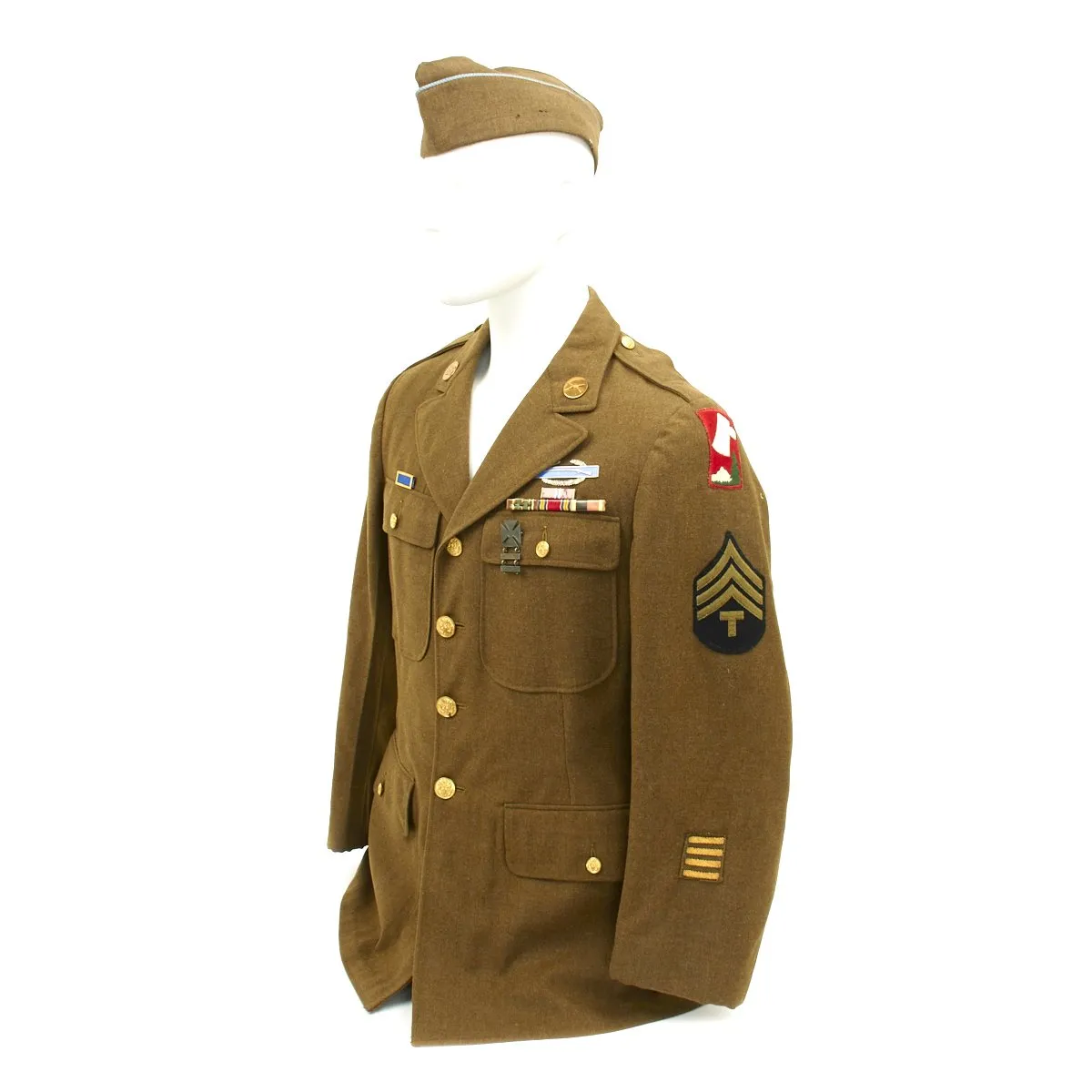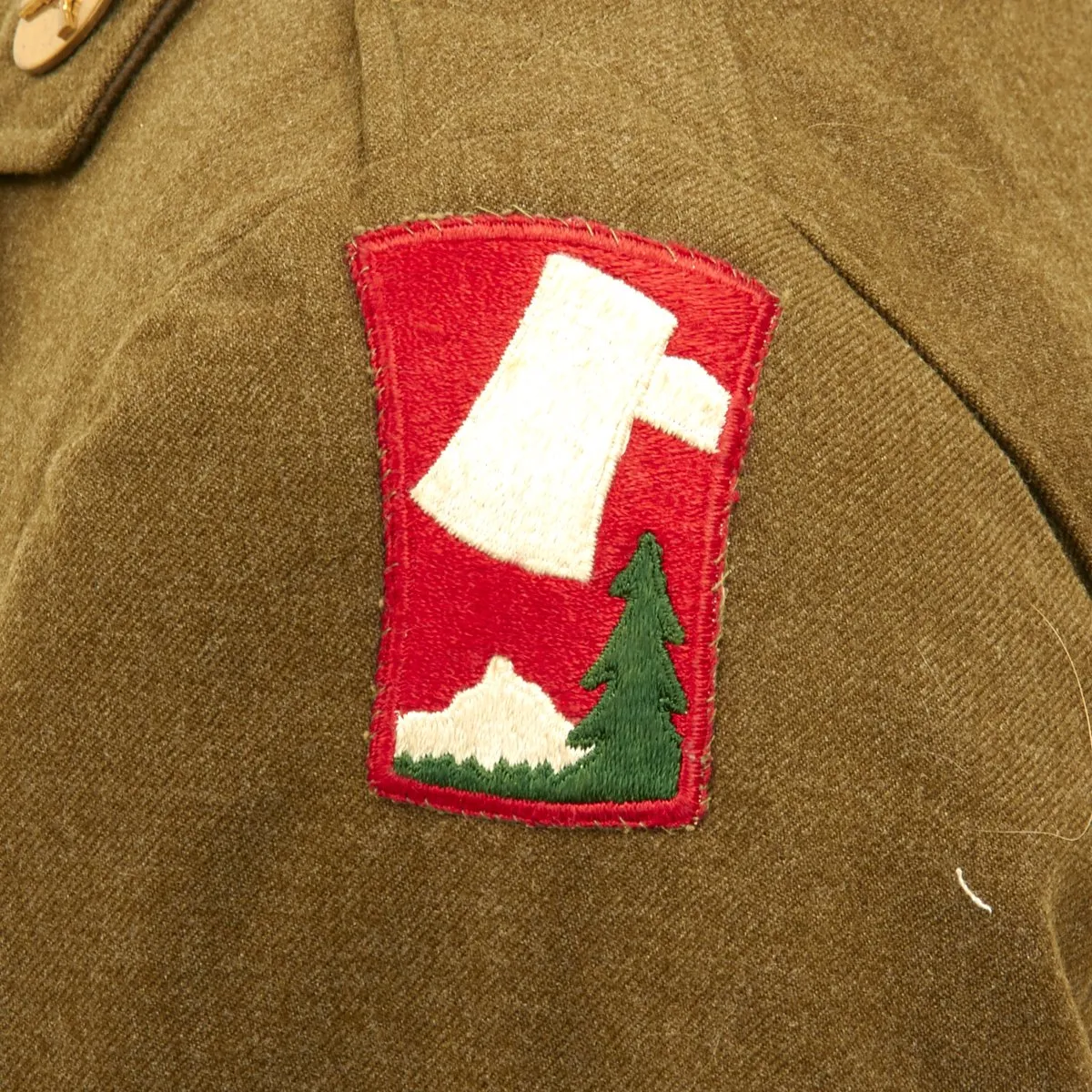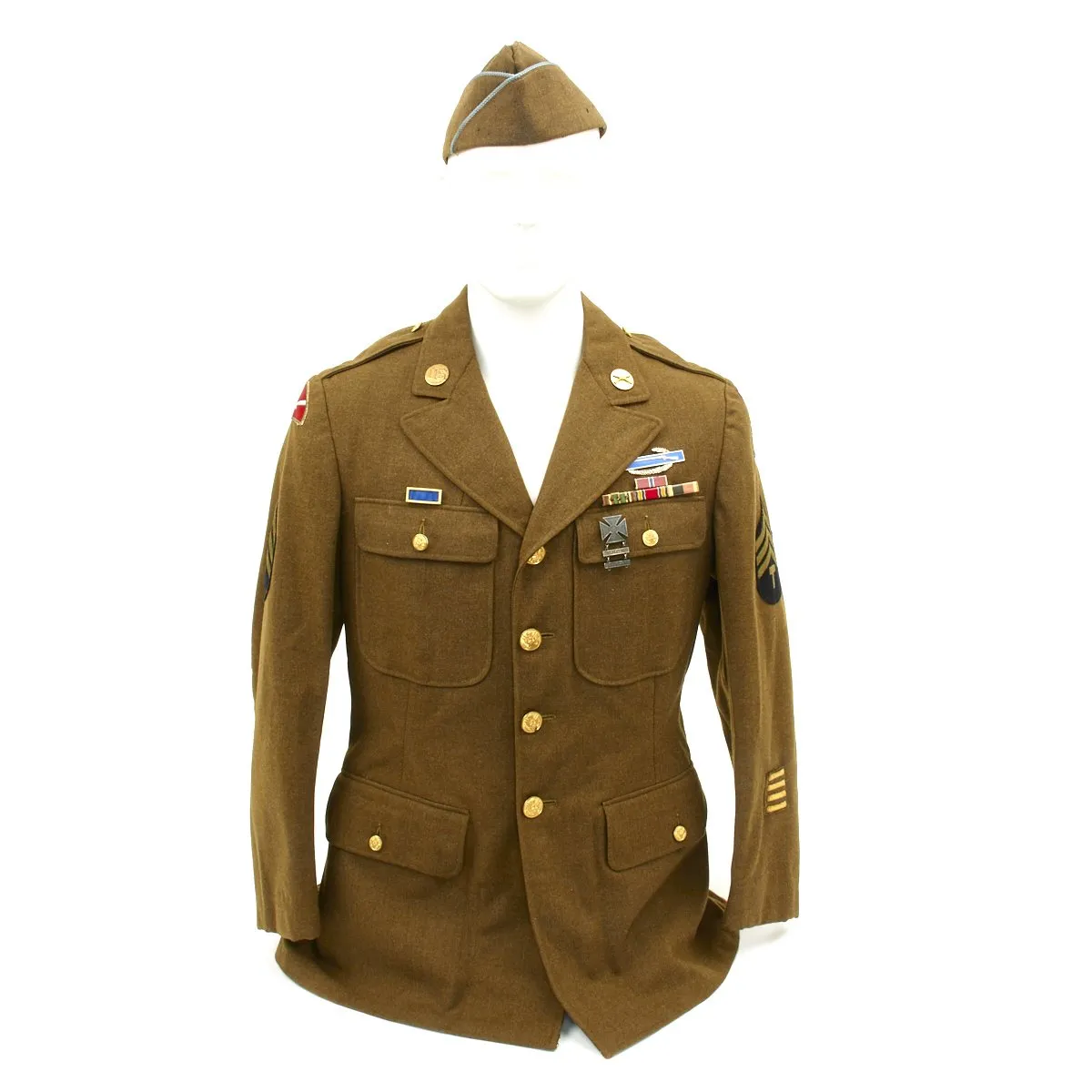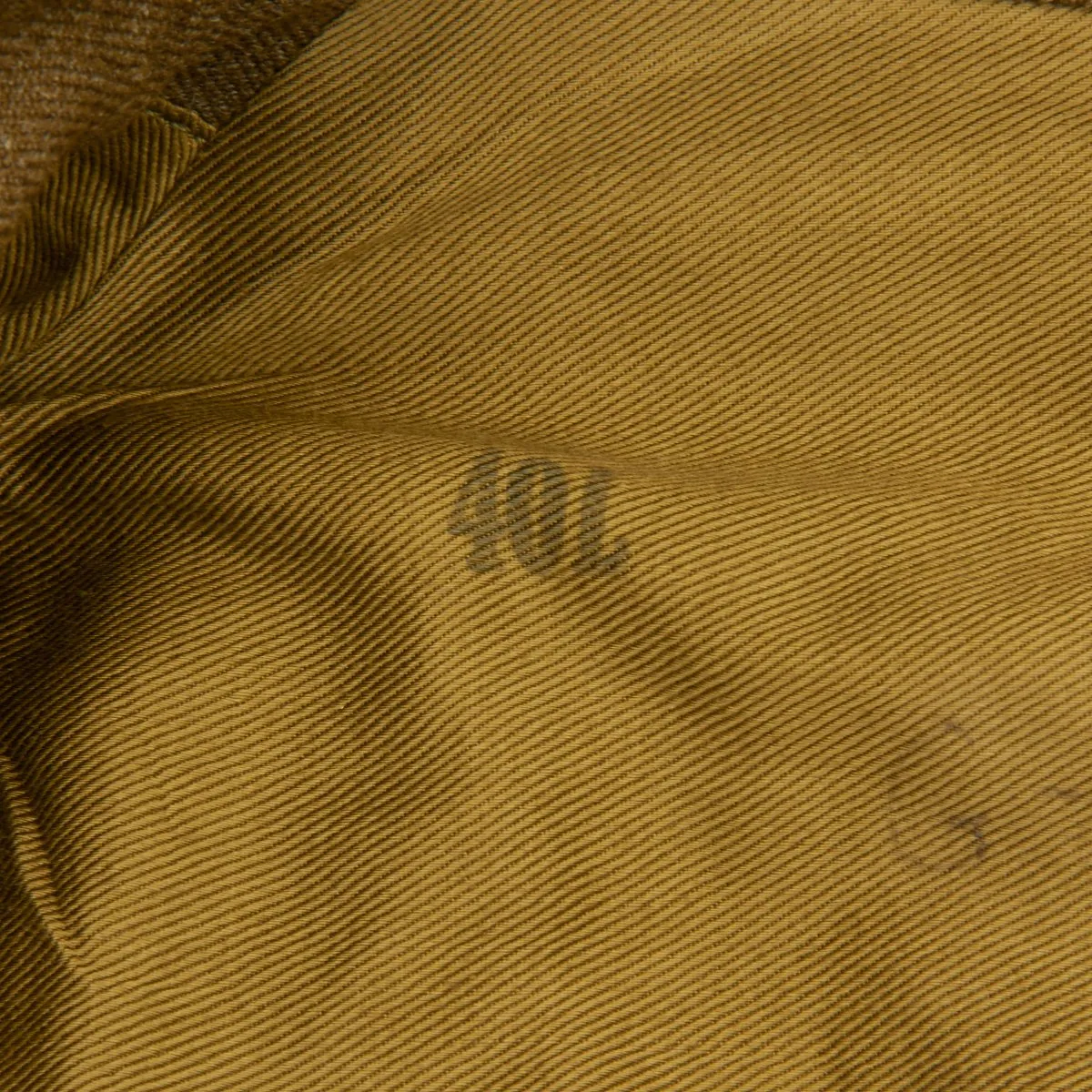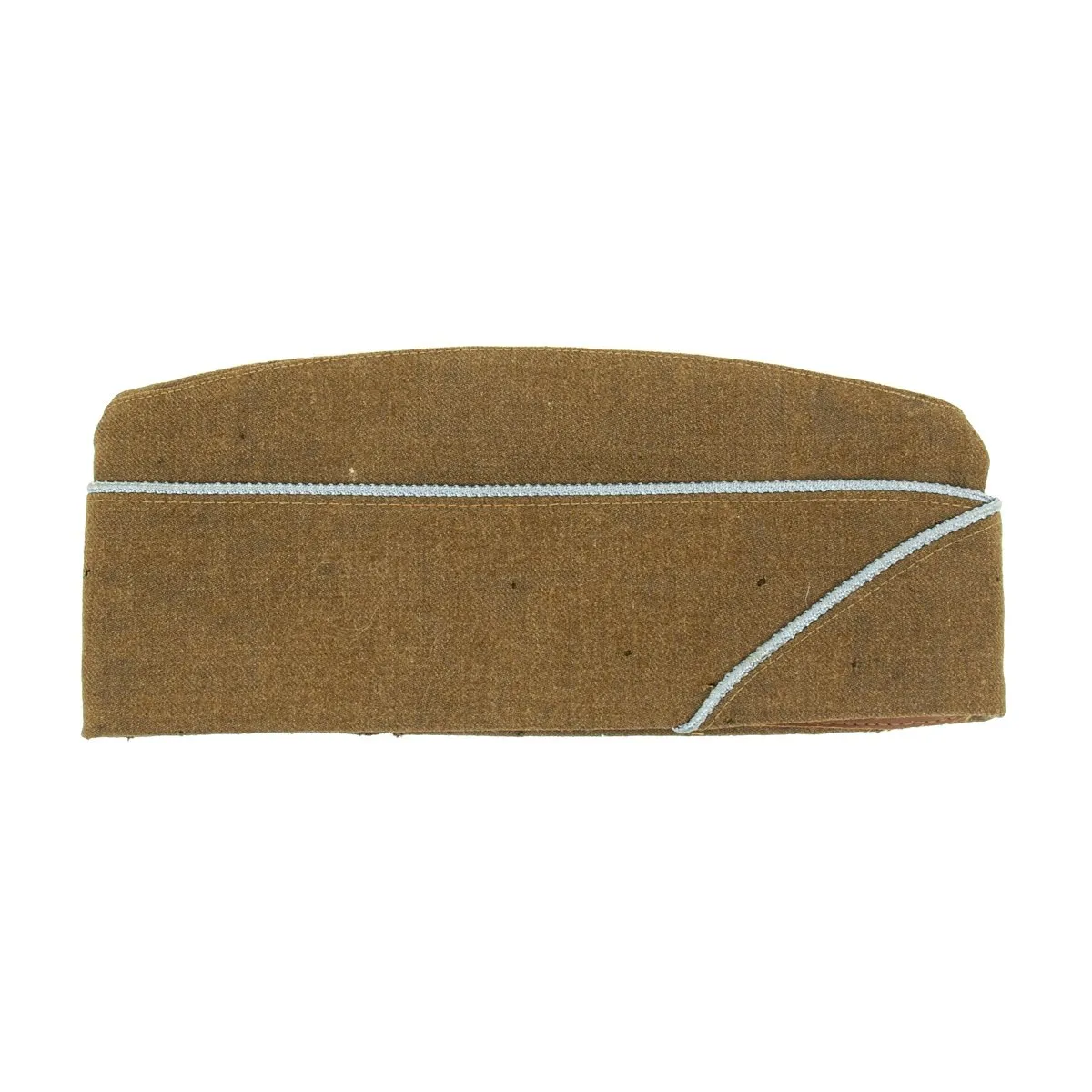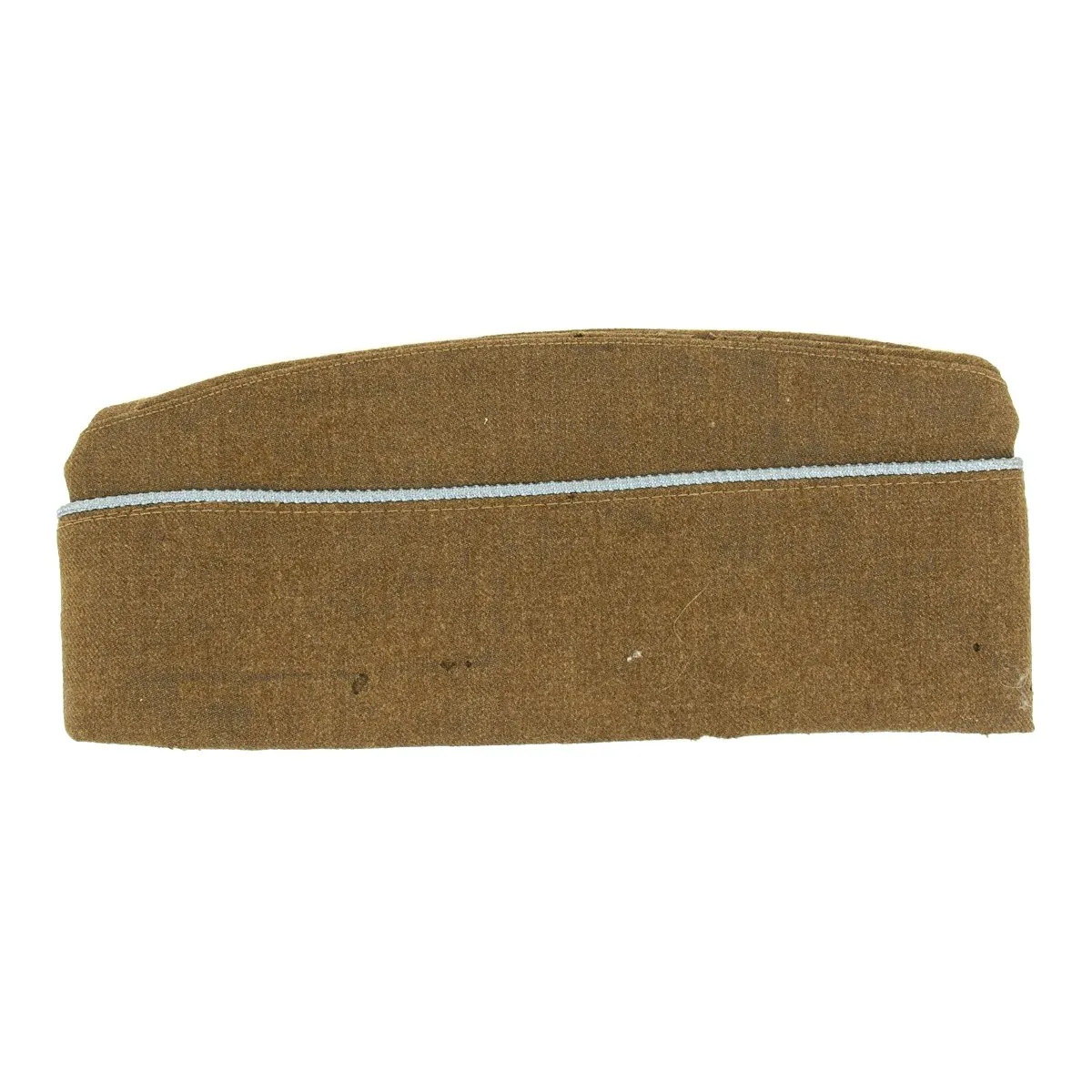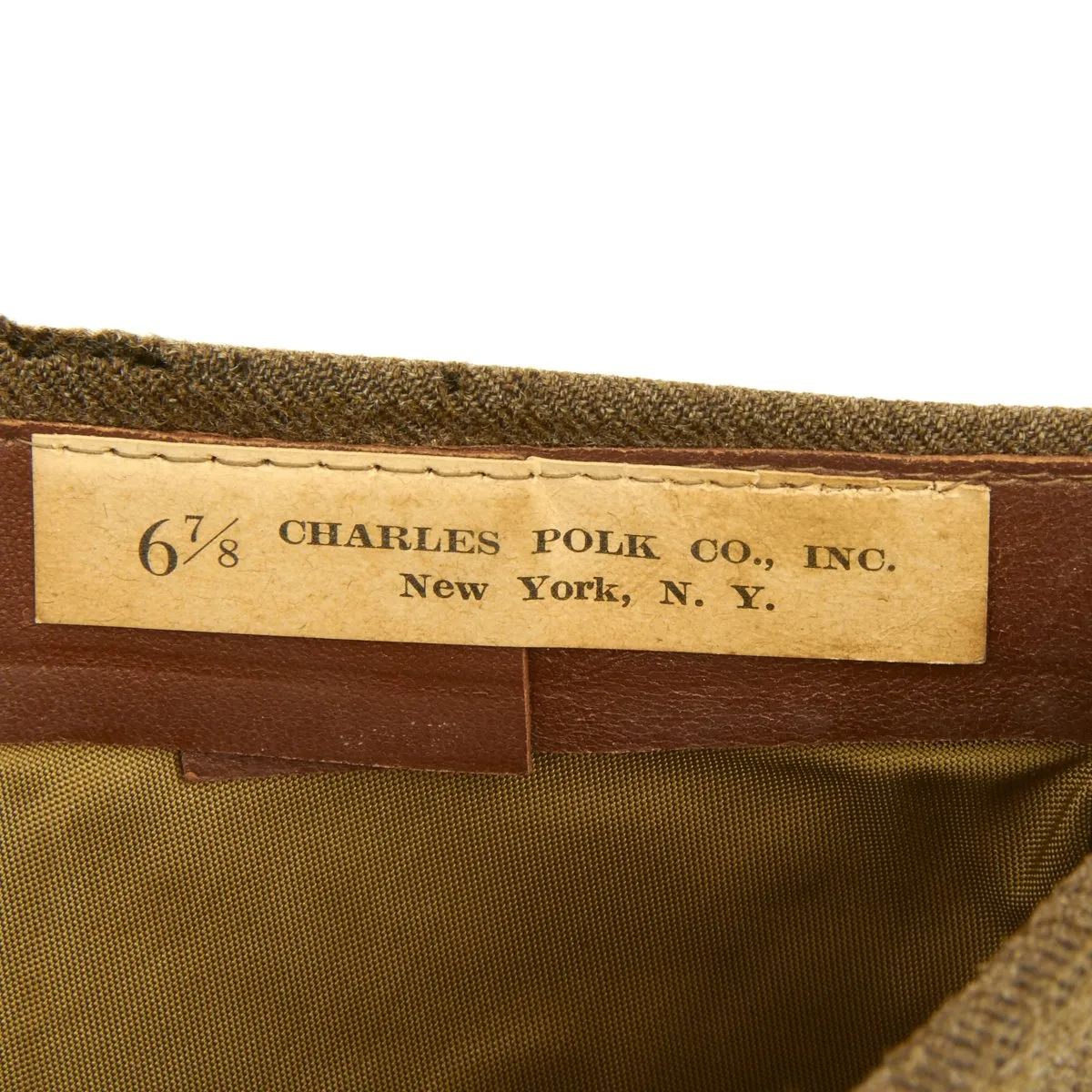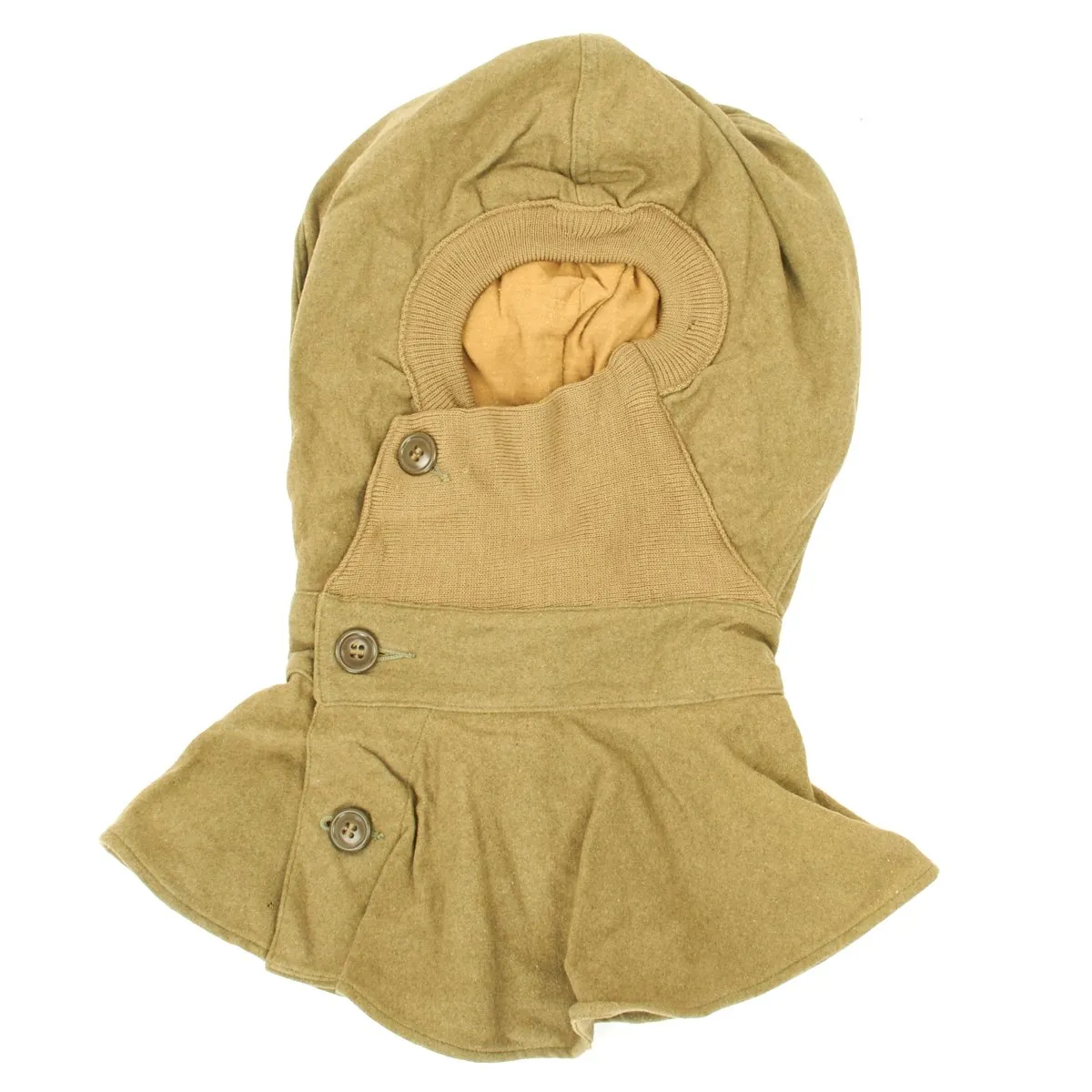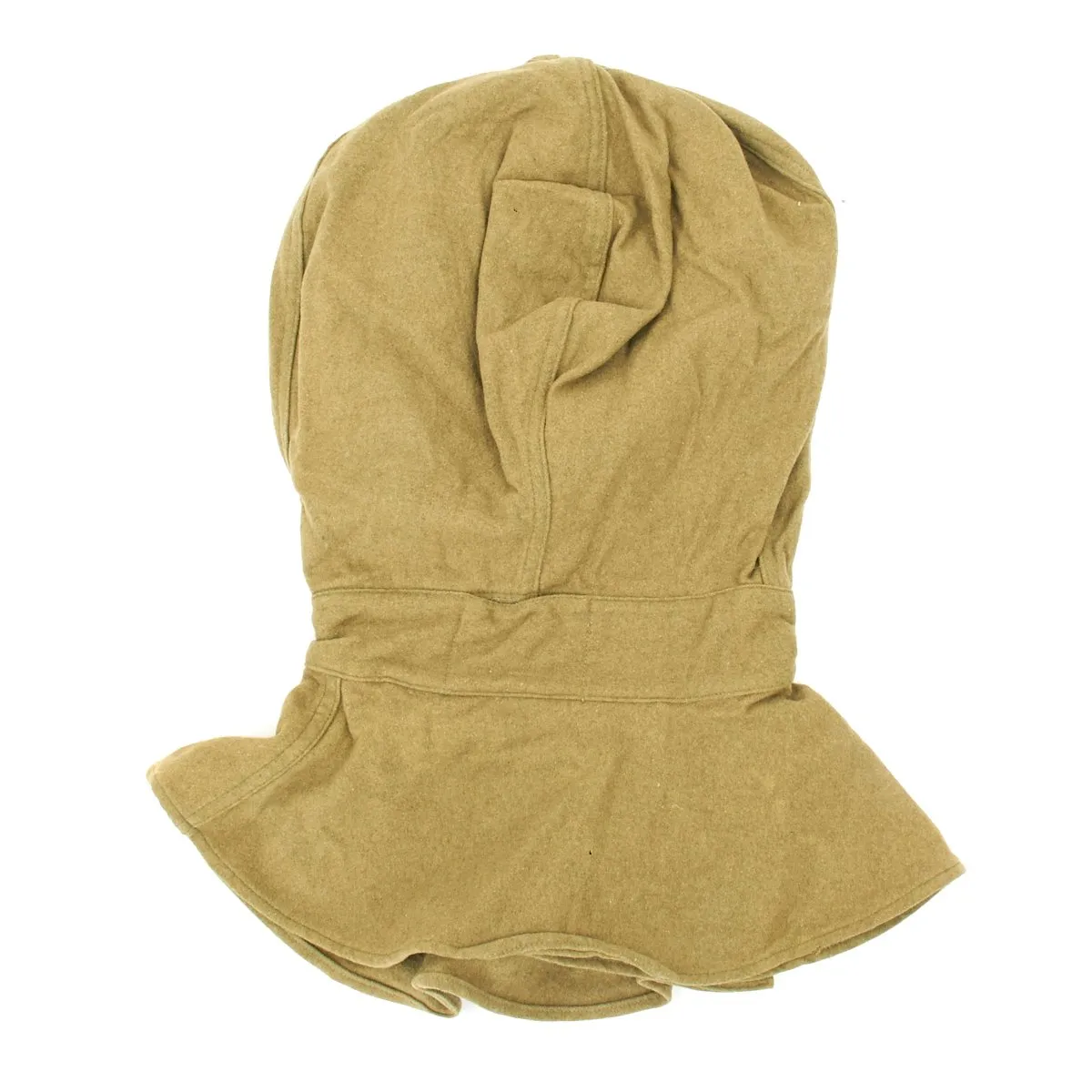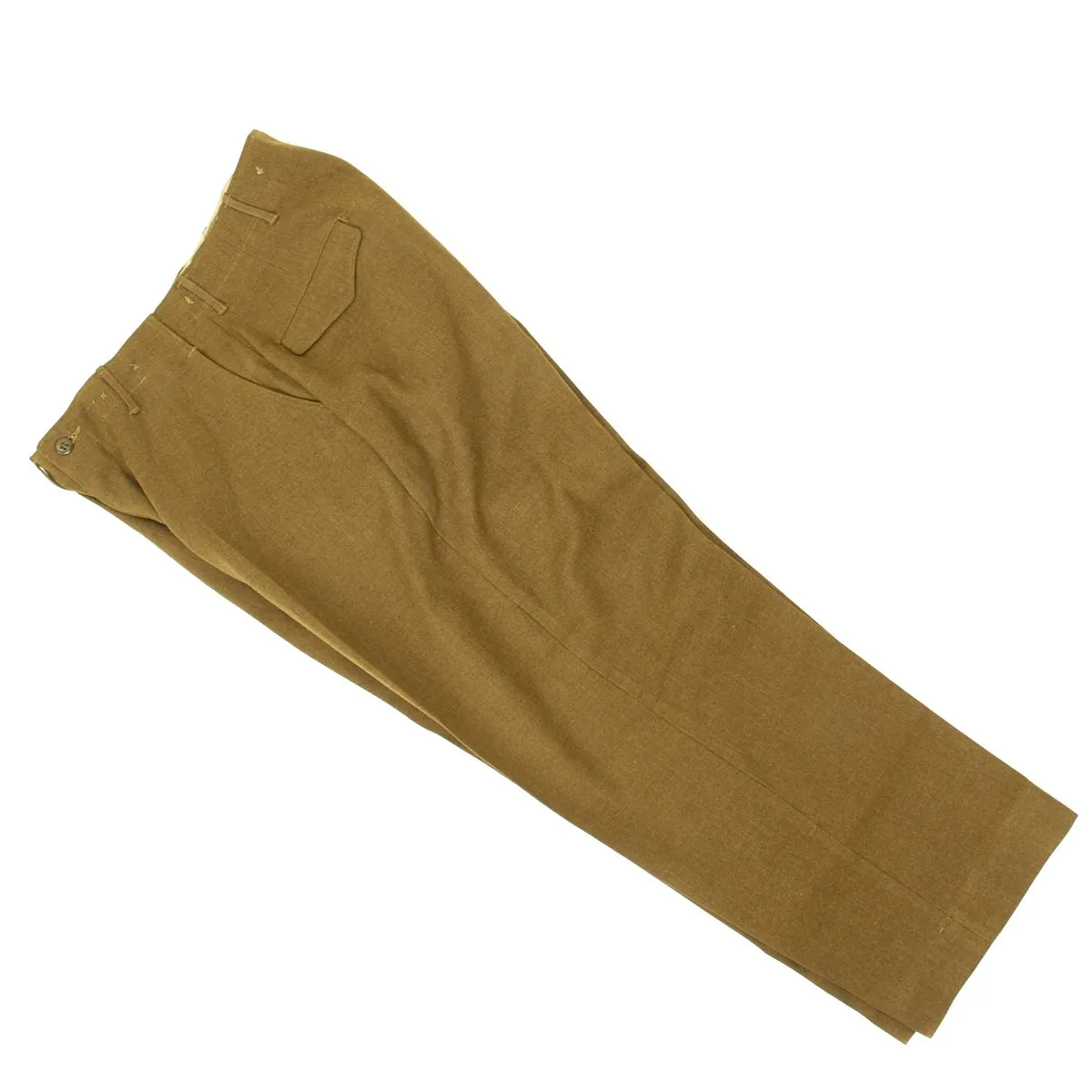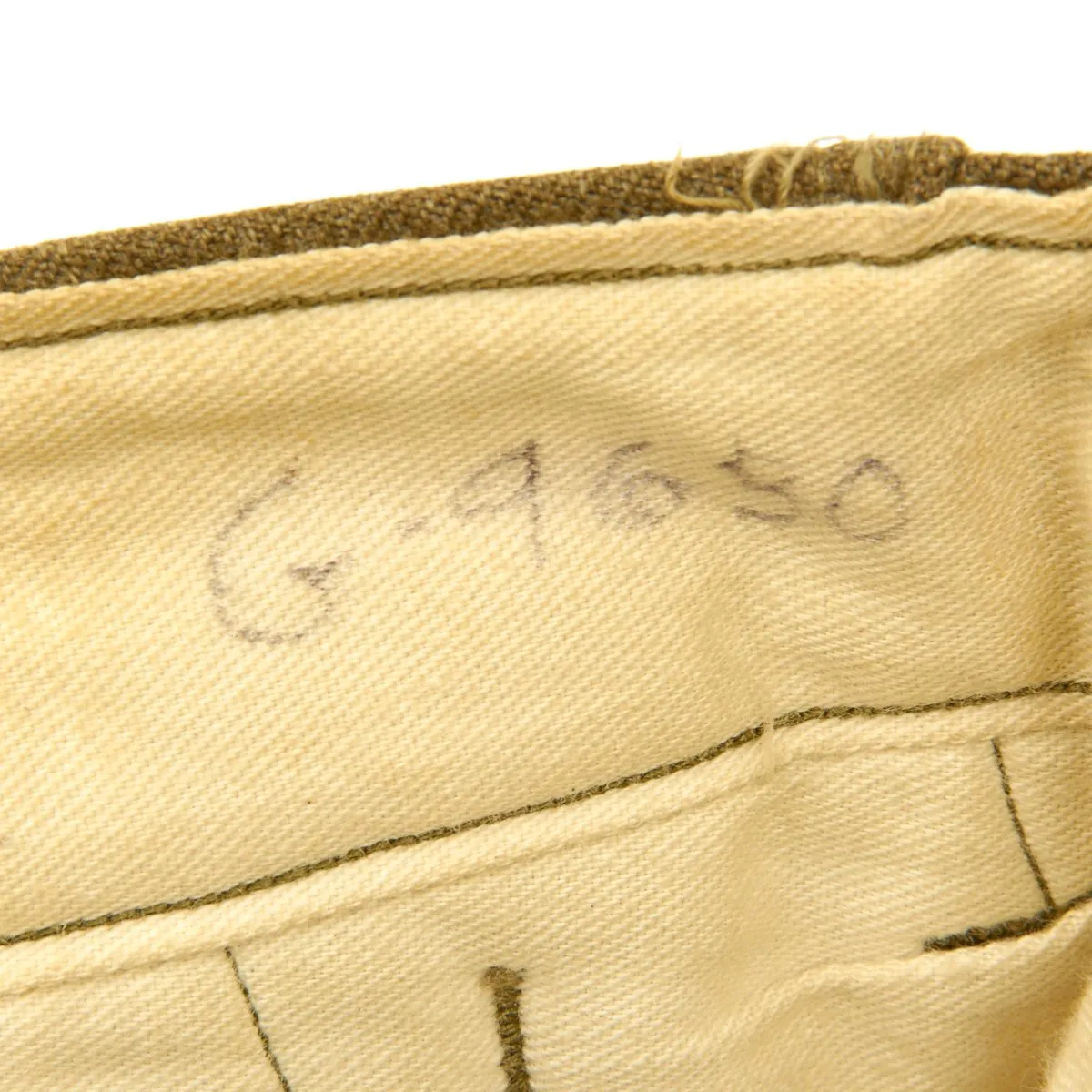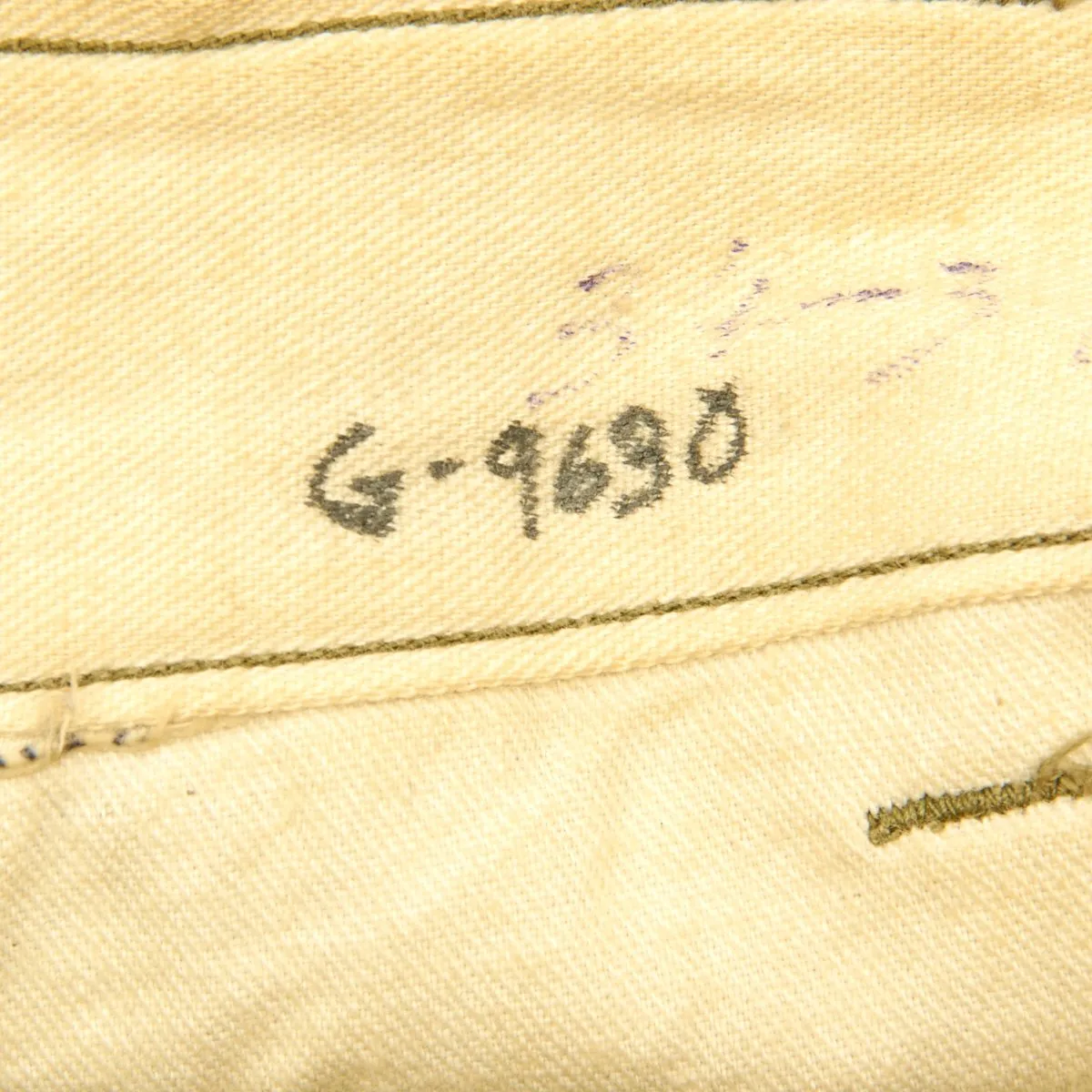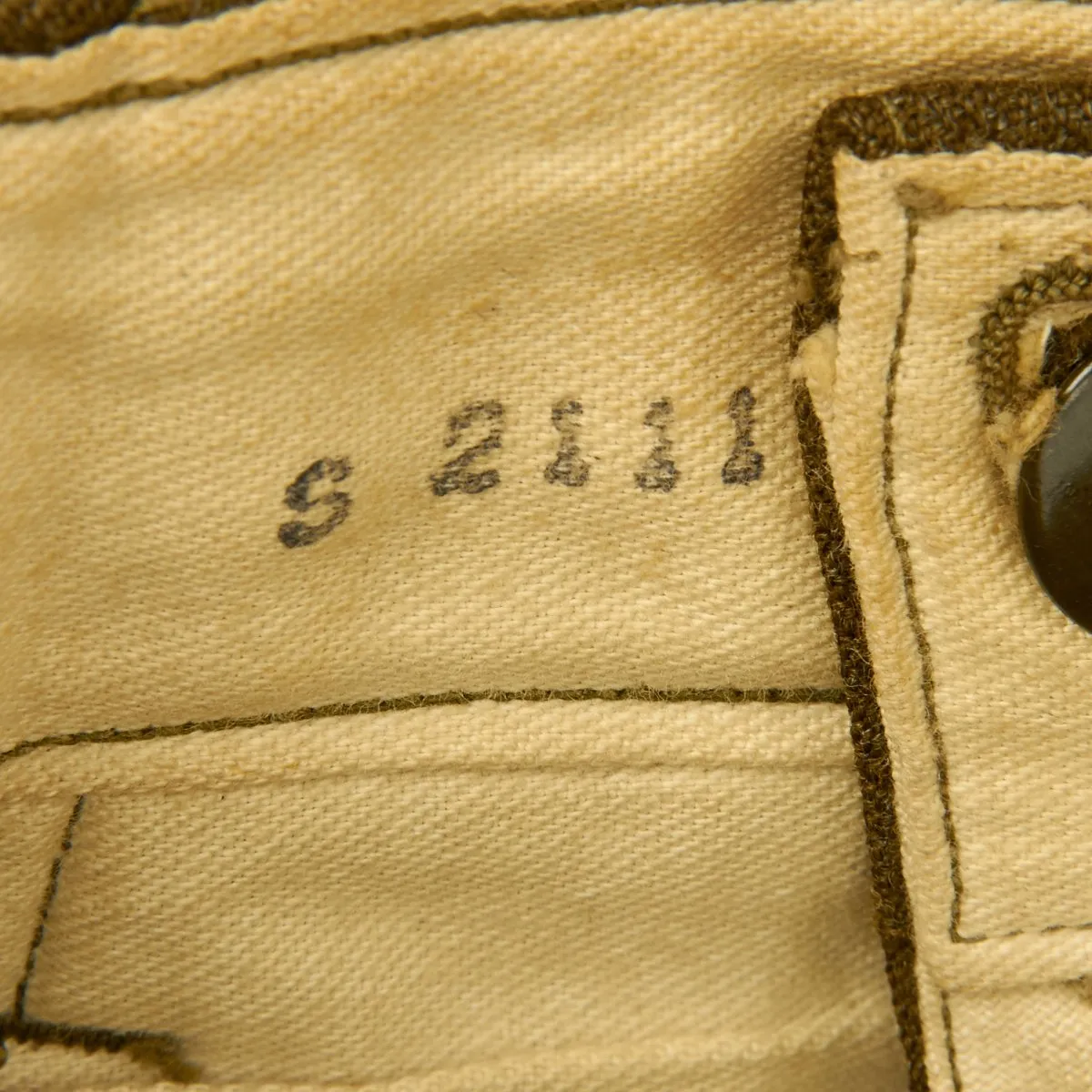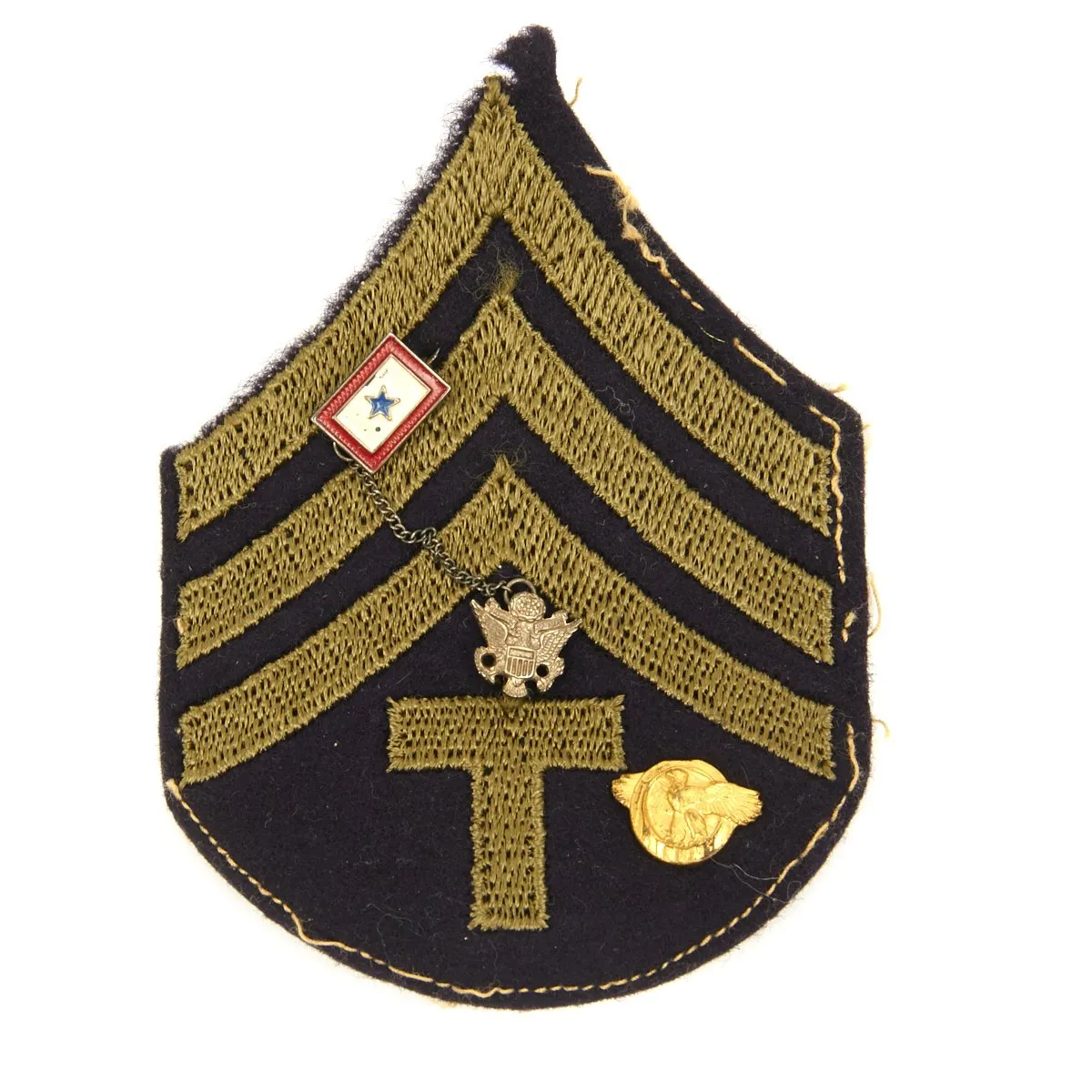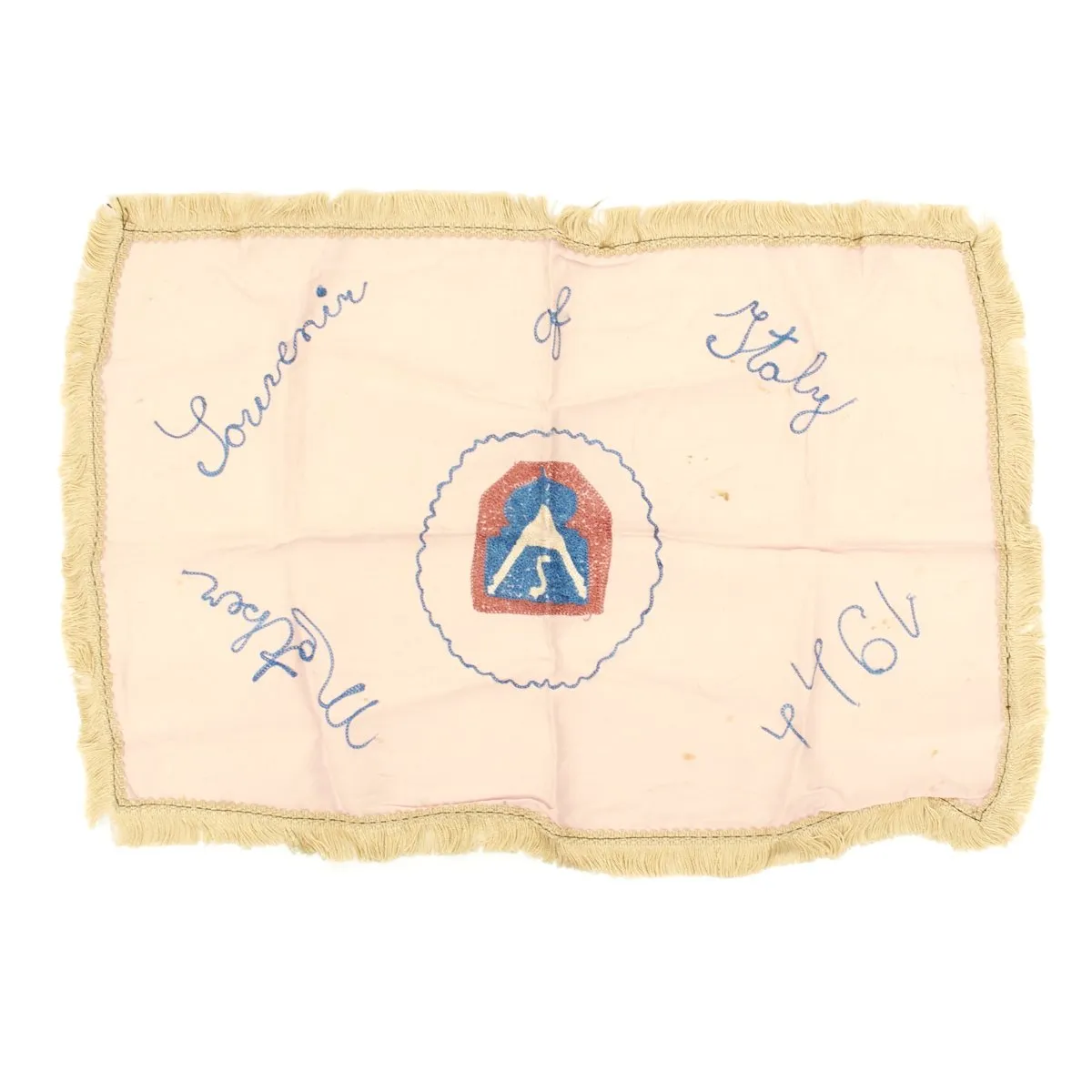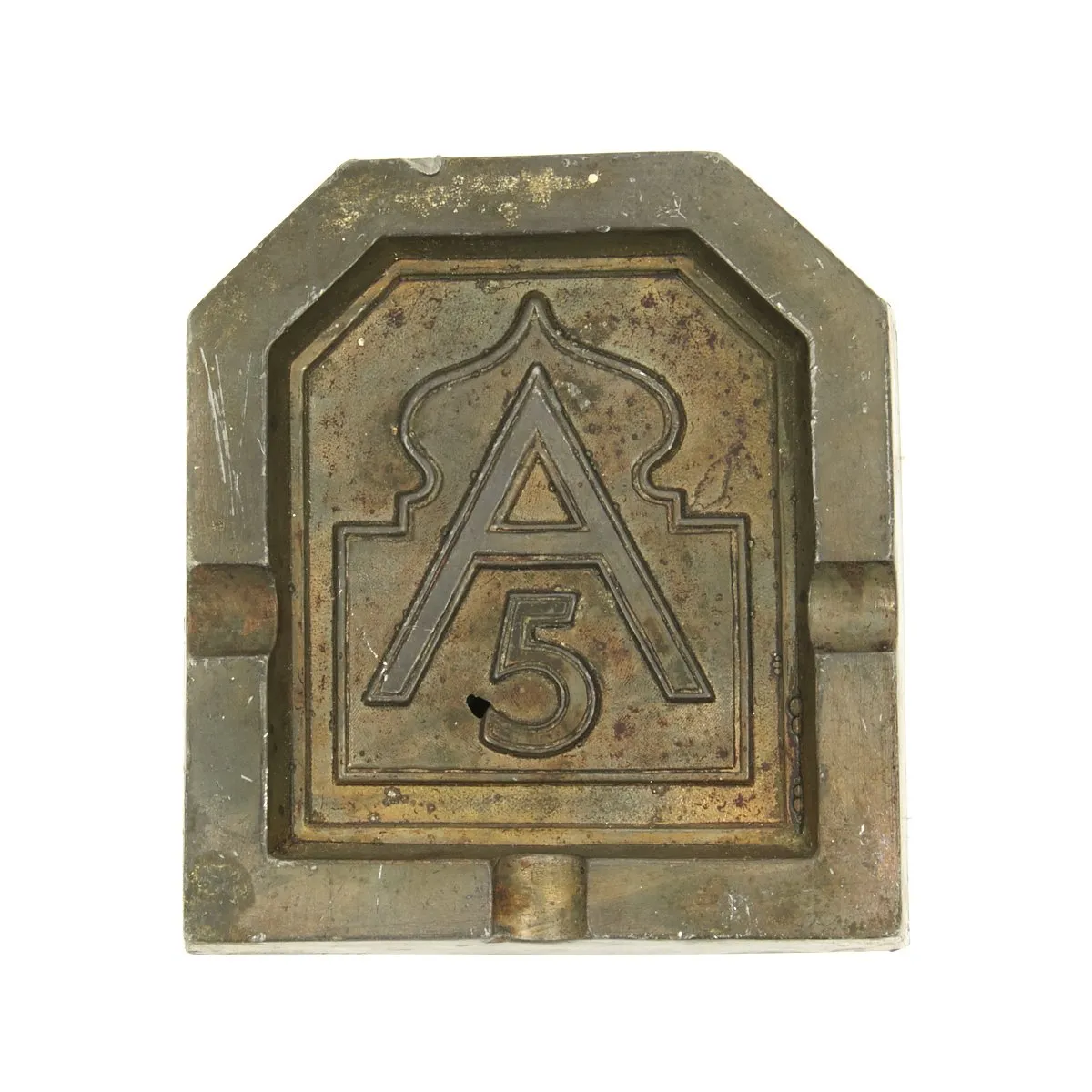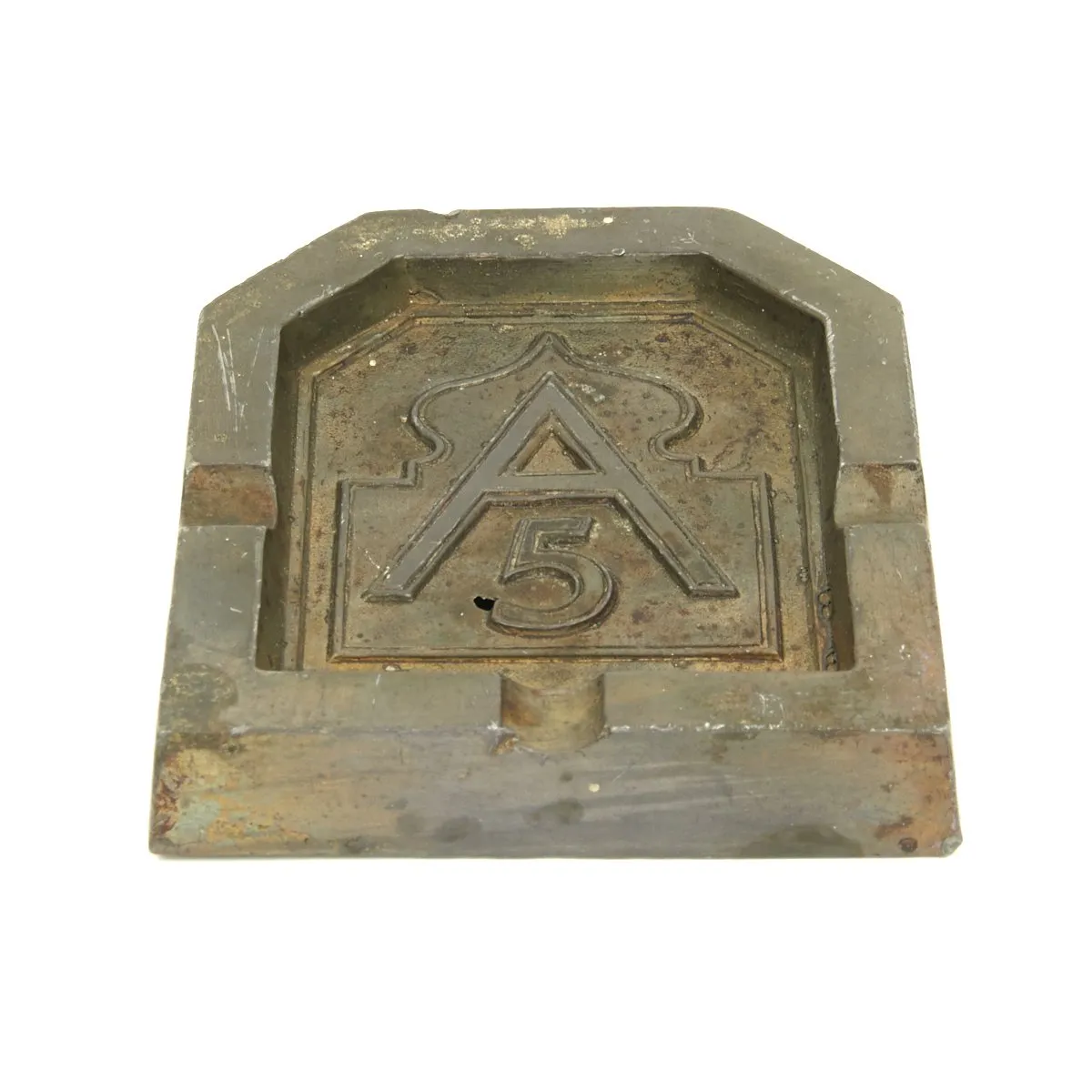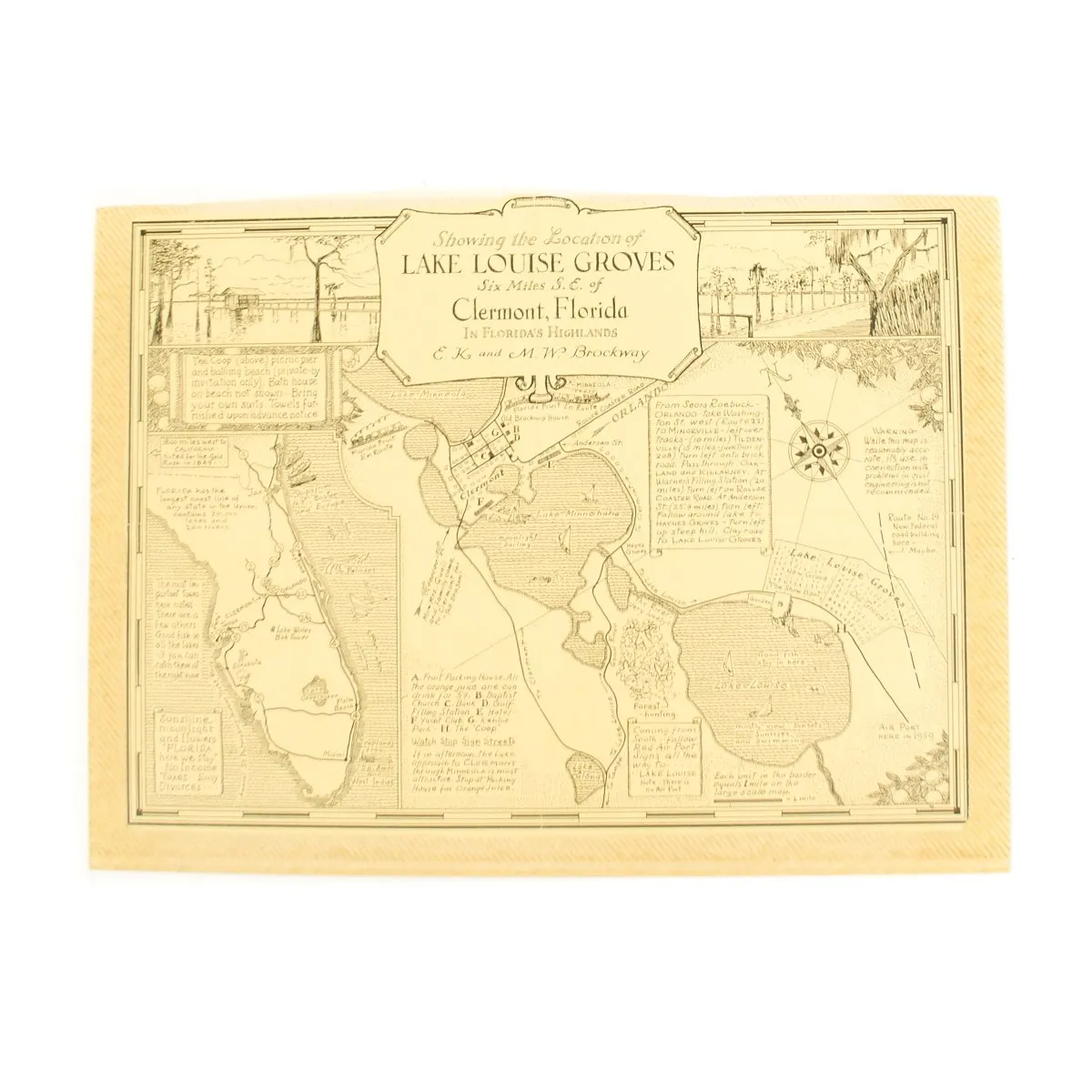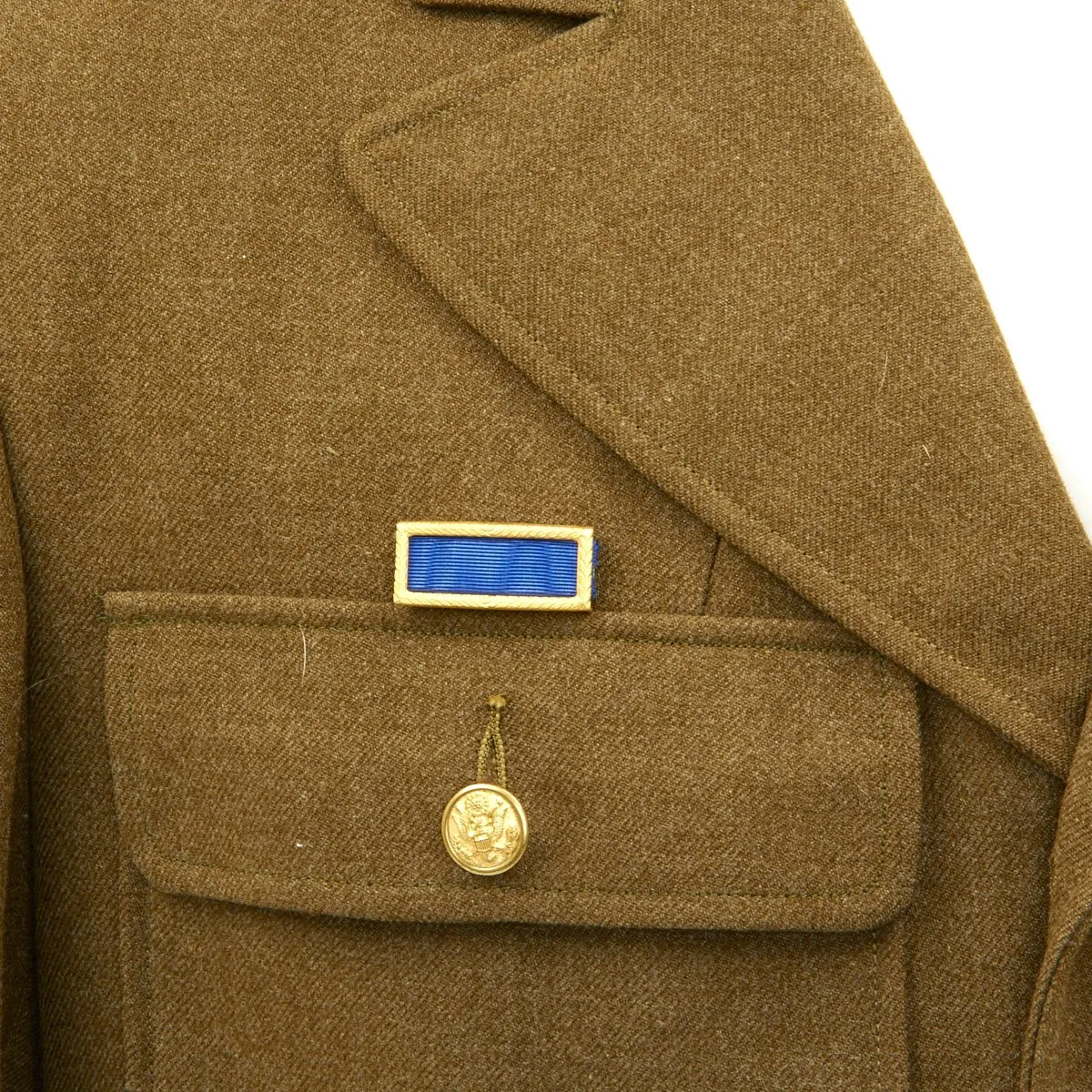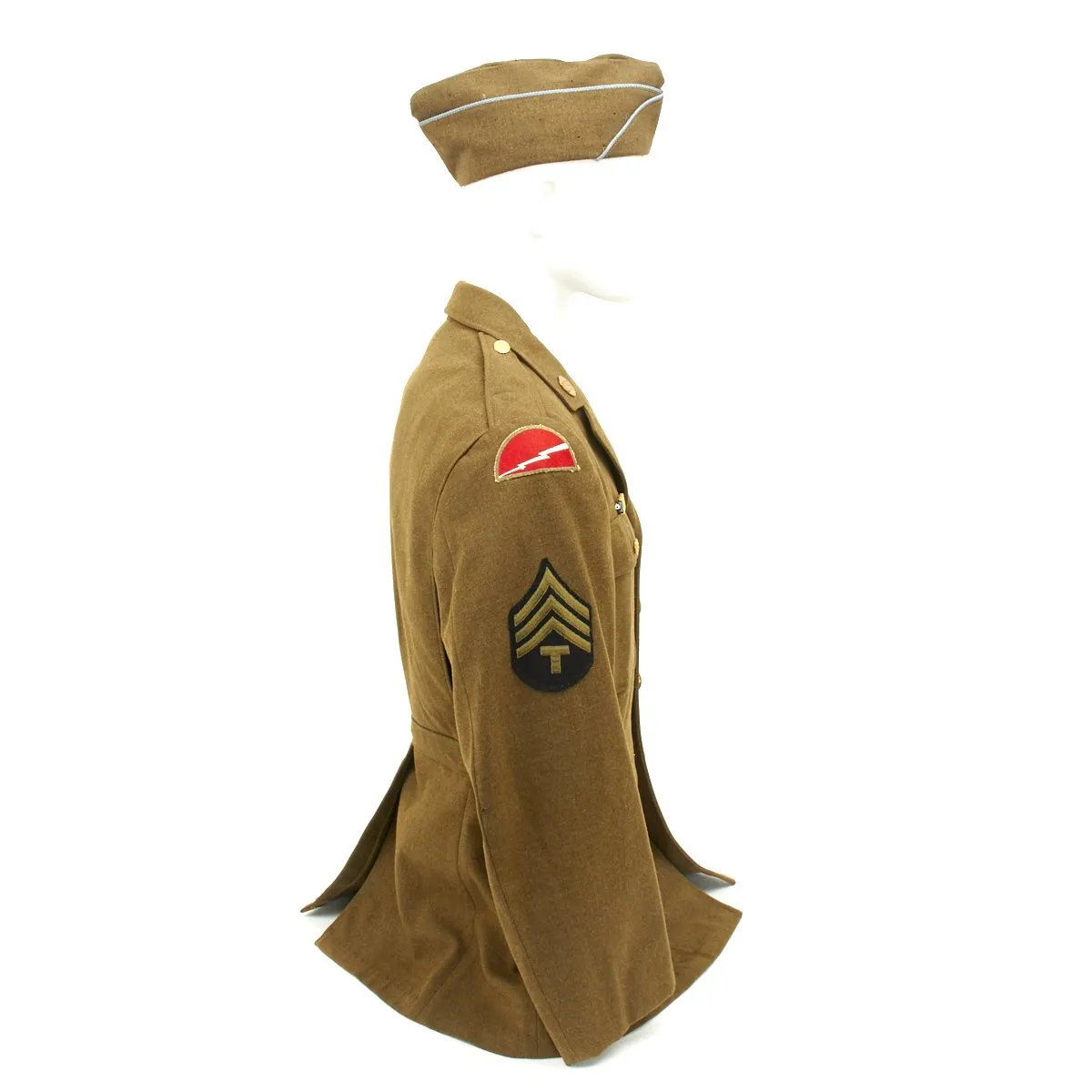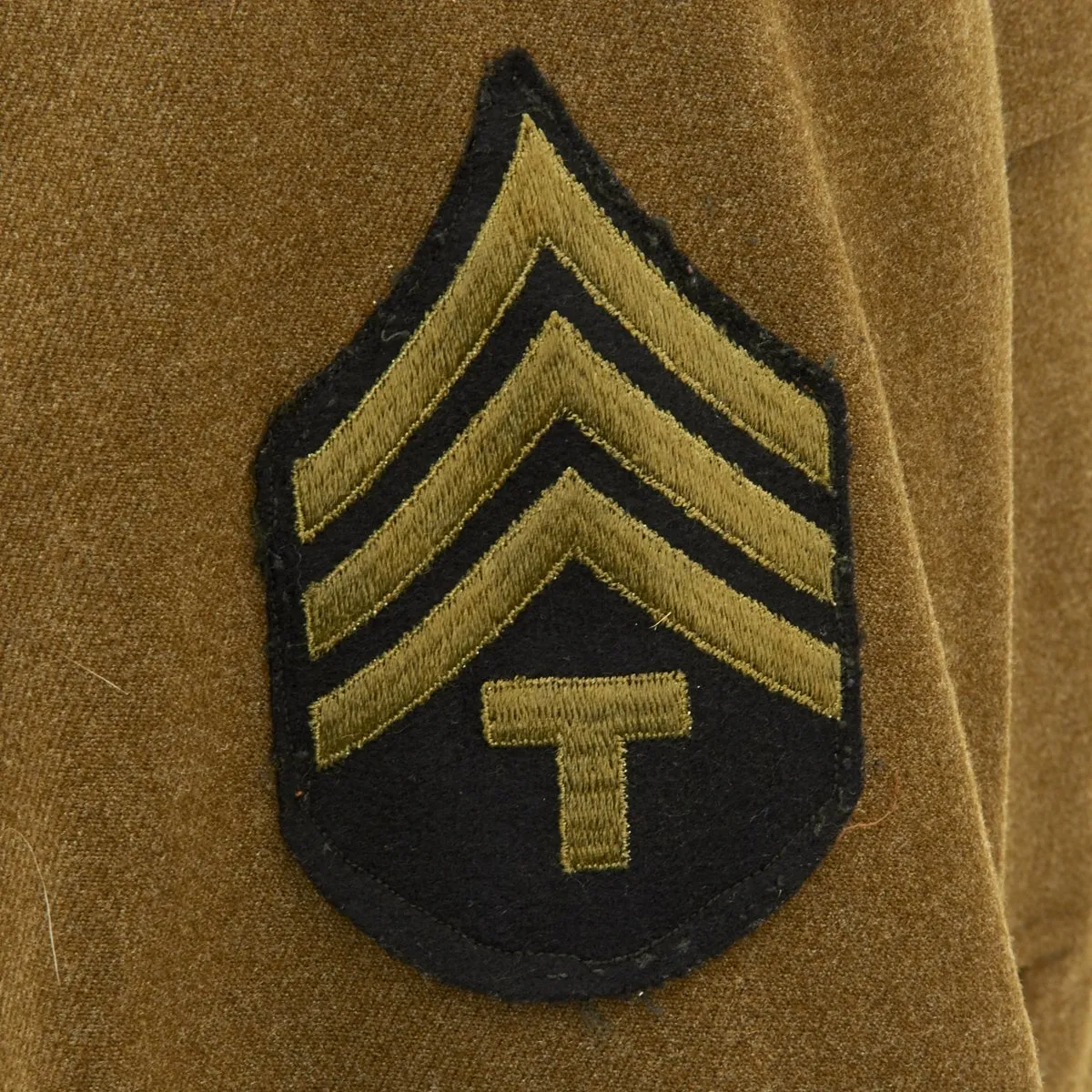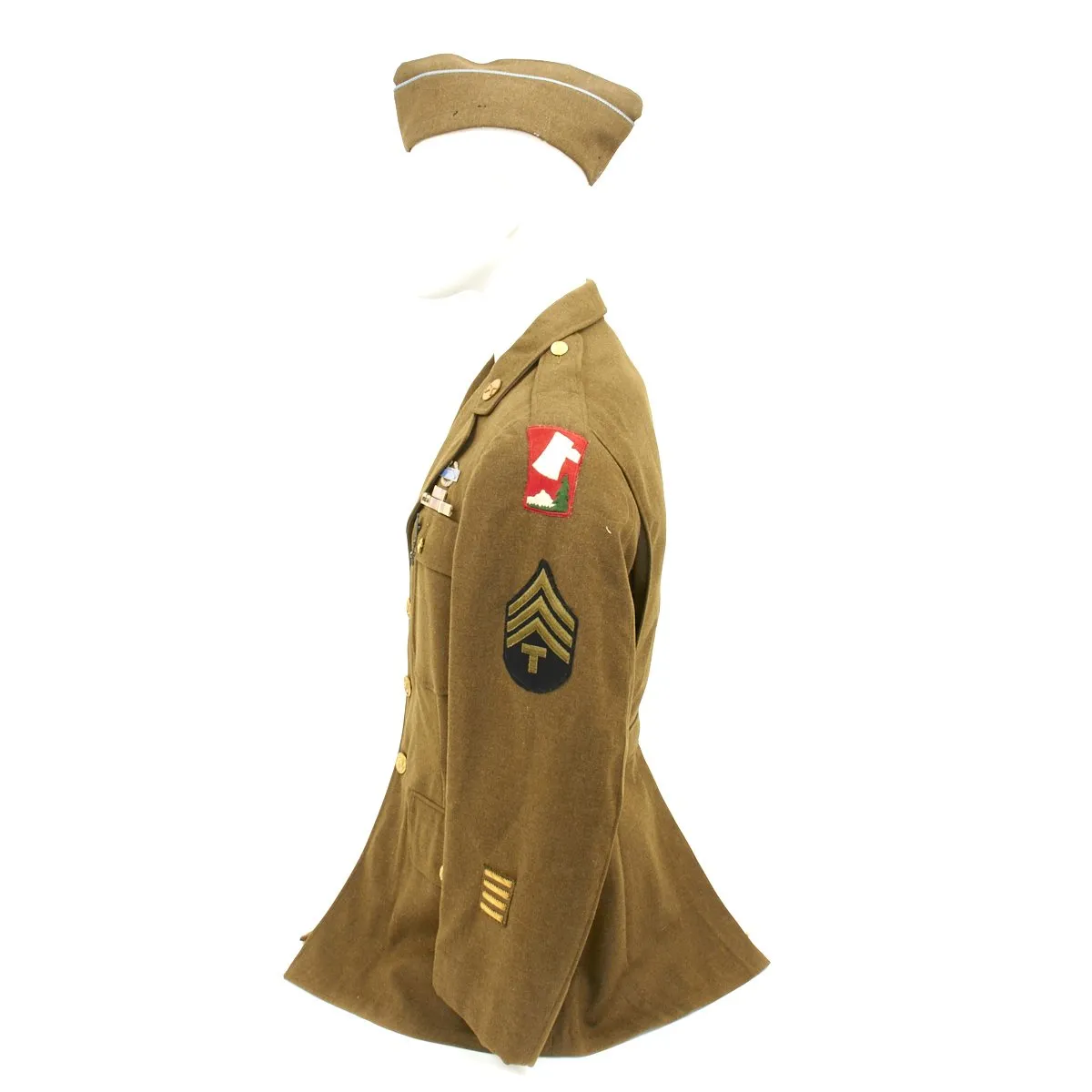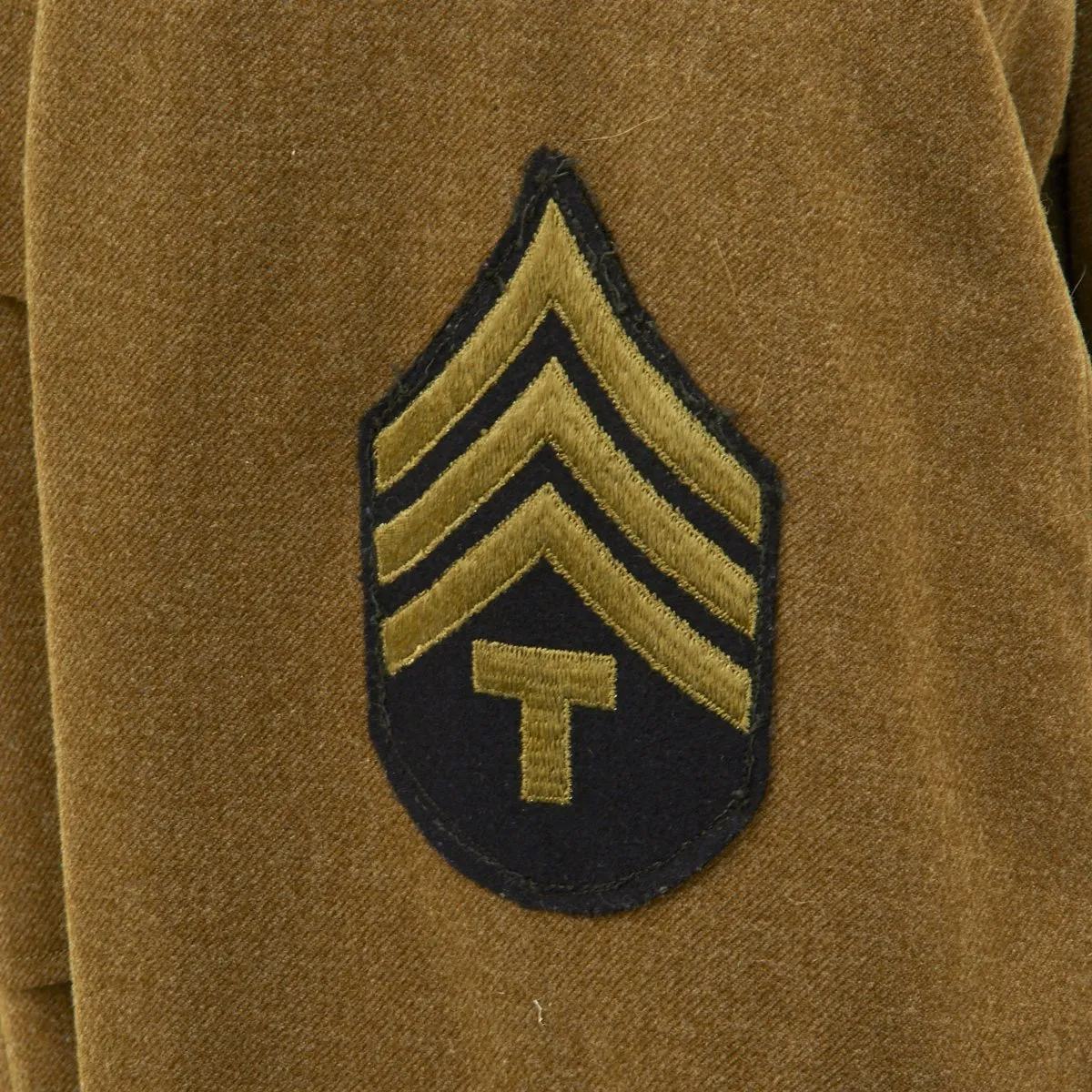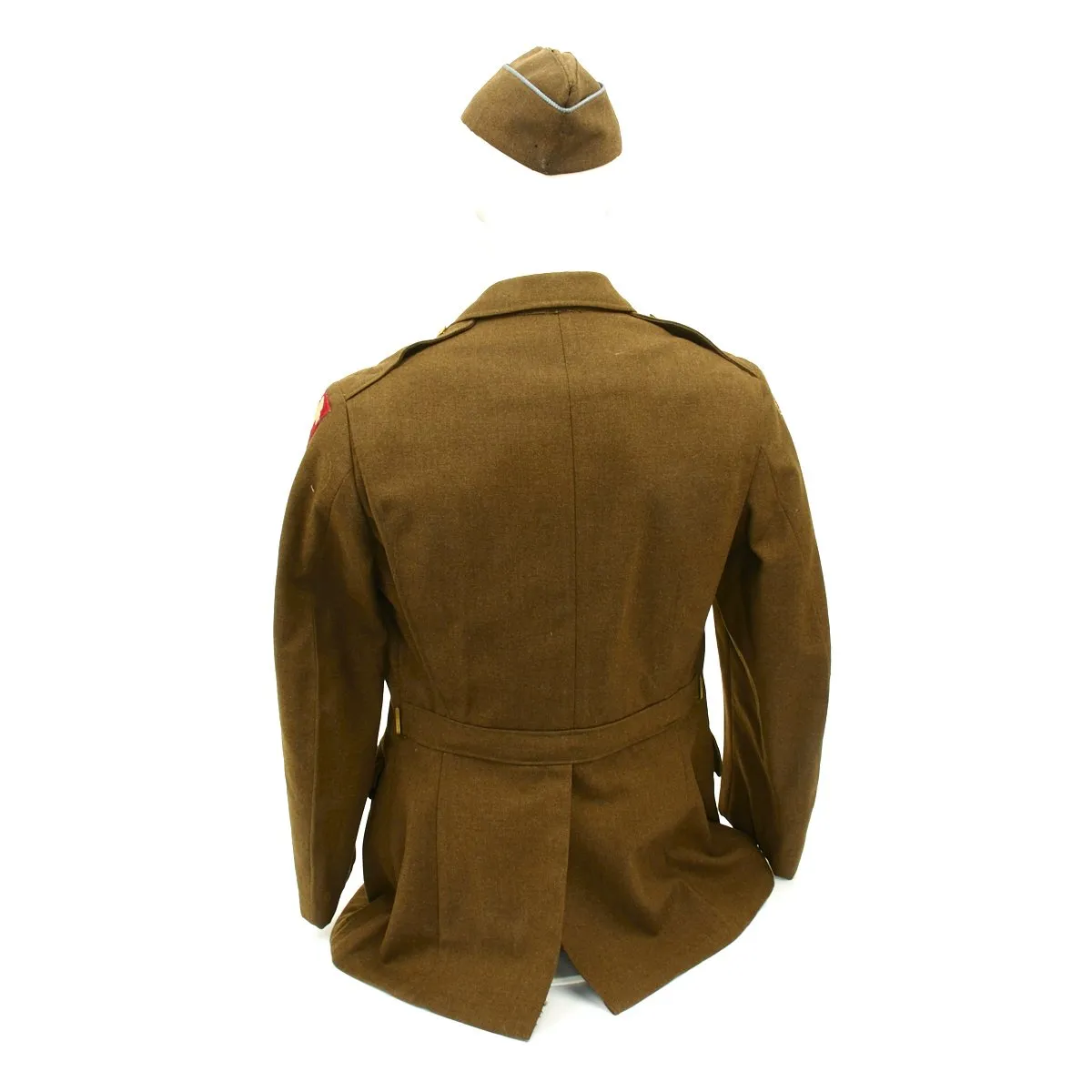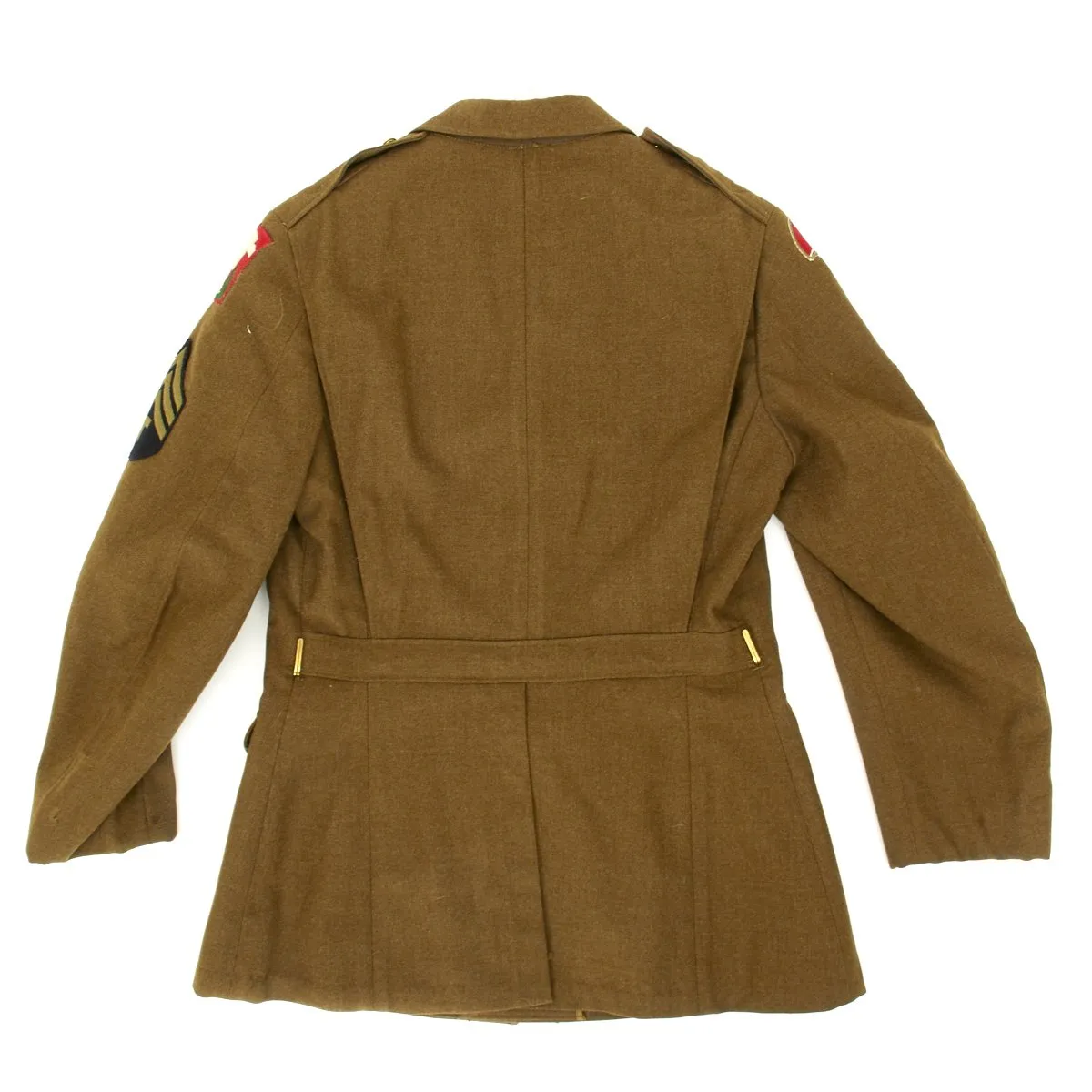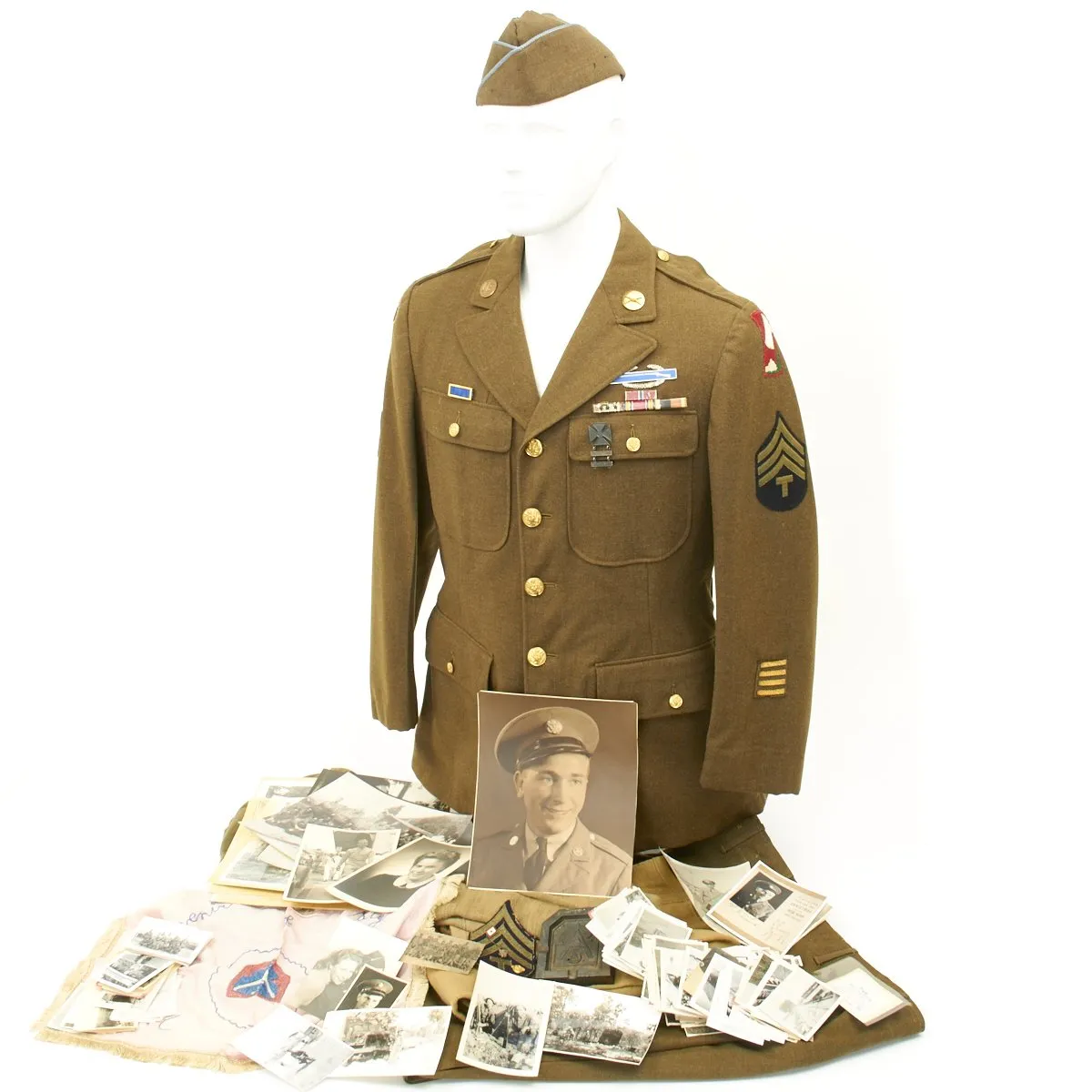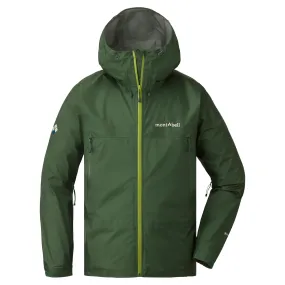Original Items: One-of-a-kind set. Richard Grasmick was born in Lincoln, Nebraska in May 1918. He was a Technician 4th Grade in the 311th Infantry Regiment, 78th Infantry Division of the U.S. Army and fought in the following campaigns during WW2: Rhineland, Ardennes-Alsace and Central Europe. Grasmick was shipped home with the 70th Division. Richard Grasmick's obituary can be found at this .
In World War II, the 78th Division was reactivated at Camp Butner, North Carolina on 15 August 1942. It was designated as a replacement pool division on 1 October 1942, and remained in this assignment until 1 March 1943, when the 78th Division was restored to field duty, and to its training regimen. 78th Division moved to the Carolina Maneuver Area on 15 November 1943 to test its training, and then returned to Camp Butner on 7 December 1943. The personnel then went on Christmas leave, and deployed to the Tennessee Maneuver Area on 25 January 1944, where they participated in the 5th Second Army Tennessee Maneuvers. They then moved to Camp Pickett, Virginia, where they filled their TO&E,(table of organization and equipment), then deployed to the staging area at Camp Kilmer, NJ on 4 October 1944.
After two years as a training division, the 78th embarked for the European Theatre from the New York POE on 14 October 1944, whereupon they sailed for England. They arrived on 26 October 1944, and after further training crossed to France on 22 November 1944.
After landing in France, the division moved to Tongeren, Belgium on 27 November 1944, and to Roetgen, Germany on 7 December 1944, to prepare for combat. The 311th Infantry Regiment was attached to the 8th Armored Division in the Hurtgen Forest, 10 December. The 309th and 310th Infantry Regiments relieved elements of the 1st Division in the line in the vicinity of Entenpfuhl, 1–12 December. On the 13th these regiments smashed into Simmerath, Witzerath, and Bickerath and were fighting for Kesternich when Gerd von Rundstedt launched his counteroffensive in the Monschau area, on 18 December.
The 78th held the area it had taken from the Siegfried Line against the violent German attacks throughout the winter. The Division attacked, 30 January 1945, and took Kesternich, 2 February, the town of Schmidt on the 8th, and captured intact the vital Schwammanauel Dam the next day. In the advance, the Roer River was crossed, 28 February, and the division joined the offensive of the First and Ninth Armies toward the Rhine. That river was crossed over the Ludendorff Bridge at Remagen, 8 March, by the 310th Regiment, the first troops to cross in the wake of the 9th Armored Division. That unit, attached to the 9th Armored and acting as a motorized unit had driven across Germany capturing Euskirchen, Rheinbach, and Bad Neuenahr. The 78th expanded the bridgehead, taking Honnef and cutting part of the Autobahn, 16 March. From 2 April to 8 May, the division was active in the reduction of the Ruhr Pocket and at VE-day was stationed near Marburg. The division remained on occupation duty in Germany until it was deactivated on 22 May 1946.
Included in this fantastic 78th "Lightning" Division set are the following items:
- Class A Uniform four pocket tunic with 78th Infantry Division patch on right shoulder, 70th Infantry Division patch on left shoulder, sterling silver Combat Infantryman's Badge, Medal ribbons (Bronze Star, European-African-Middle Eastern with three battle stars, WWII Victory Medal, Army of Occupation), Presidential Unit Citation, Rifle Expert, Technician 4th Grade Chevrons, infantry lapel pins and 4 overseas service bars on left sleeve indicating 24 months of overseas service.
- Infantry overseas garrison cap.
- 170 original photos from training to ETO service to Italian post war tourism (many marked on the back).
- Souvenir of Italy 5th Army 1944 Mother's pillow cover.
- Pants, Shirts, Socks.
- Cold Weather Hood.
- Copy of his Draft Registration Card
- Various souvenirs, mementos,etc,.
Overall a fantastic grouping from a soldier in one of the most famous U.S. infantry divisions of WWII.

